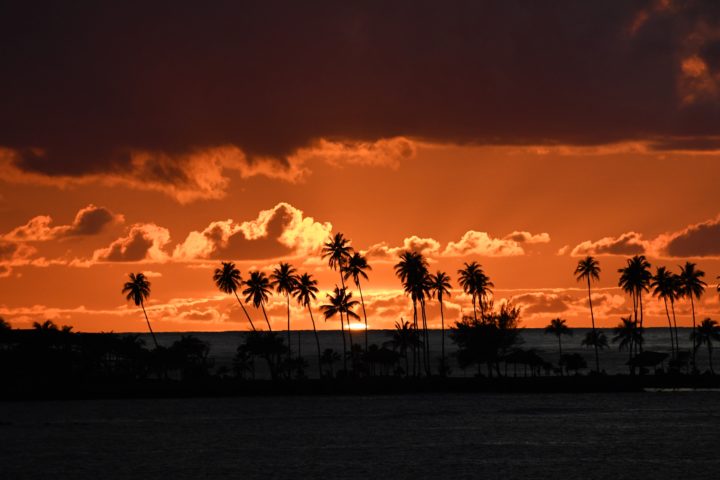(Saturday night)
A slight breeze blows through the palms. We consume a continuous supply of fruity rum drinks. It’s a beautiful, warm Saturday night, perfect for sitting out and recapping our respective journeys. A car, an airplane, an airplane, and a car ride later, we are sitting on the front porch of our host’s home away from home in Hatillo on the north shore of Puerto Rico, some eighty kilometers west of San Juan.
The patio is open-air and a foot above the sidewalk. An inviting couch bed was pushed up against the front wall of the one-story house. There were two wicker chairs, a round, glass-top table, and two more expanded camping chairs. The deck faces north toward the street, the “Parque Pasivo Hatillo del Mar” fitness park, and the ocean beyond. The surf line hides behind shrubs and the twenty-five-foot drop to the shore. We could hear the waves crashing but couldn’t see them. Palm trees create a little forest in the linear fitness park, lit with white and red lights.
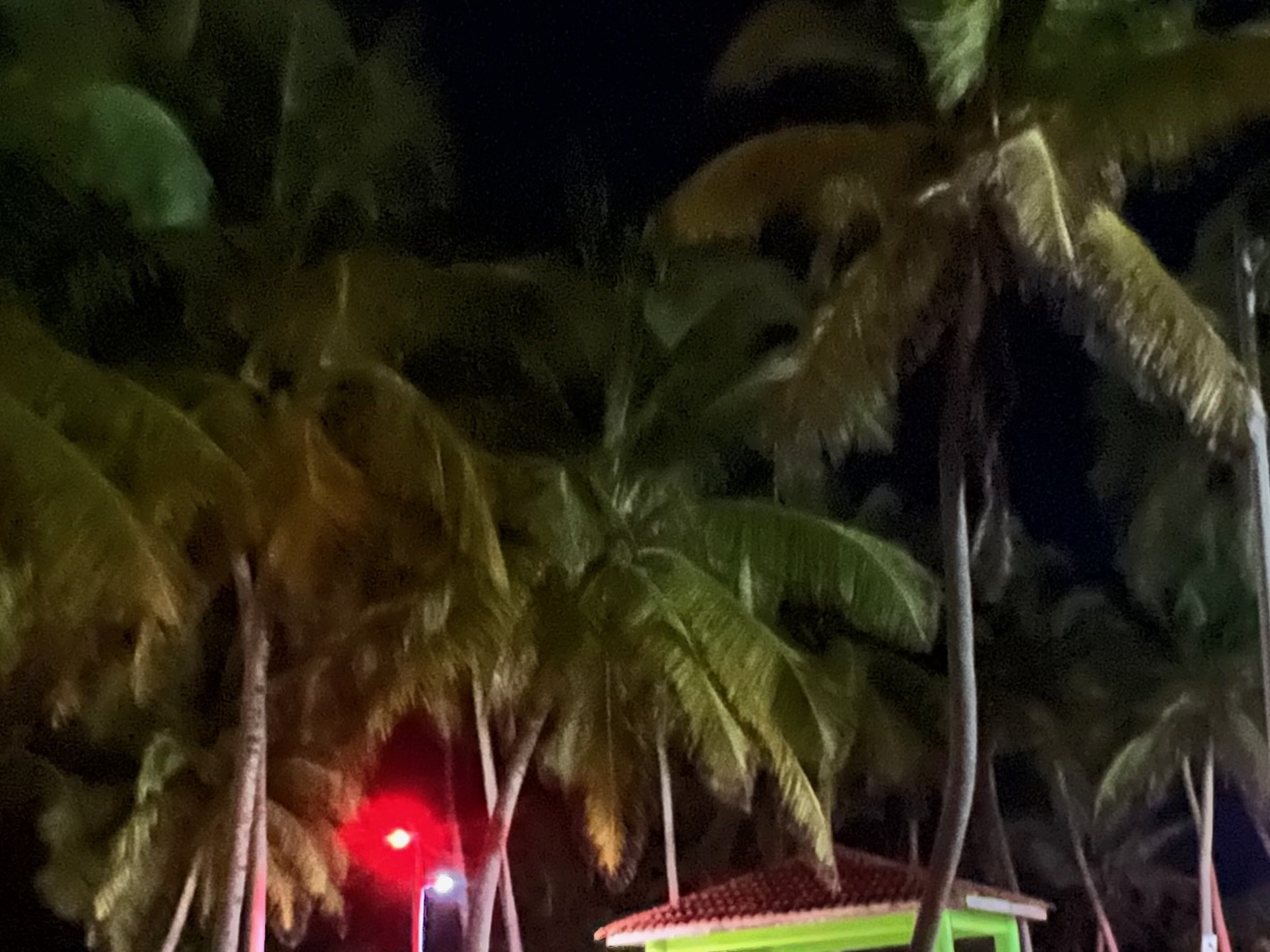
We are told that the park lighting scheme has to do with sea turtle migrations. The endangered hawksbill and leatherback sea turtles nest in Puerto Rico. Baby turtles use differences in lighting levels between the land and the sea to figure out which direction to go. Bright white lights screw with the sense of direction in adult turtles, too. The experts recommend low-wavelength lights in amber and red. The white lights contradict the hypothesis. I wasn’t thinking like a turtle then, so maybe the white lights were pointed inland and the red lights outward, but that is not the way I remember it. Hopefully, no confused hatchlings or turtles are trying to make their way up to do laps and yoga in the park.
(Sunday night)
A slight breeze blows through the palms. People walk laps in the park. Cats casually stroll down the street. We consume a continuous supply of fruity rum drinks. It’s a beautiful, warm Sunday night, perfect for sitting out and recapping our day in old San Juan and ranting about whether or not all the software we write should be encoded into a chip.
We parked outside Old San Juan, lucky to score a parking spot across from the “El Capitolio de Puerto Rico,” and walked into Old San Juan. San Juan is the second oldest European settlement in America, after Santa Domingo in the Dominican Republic, established by Columbus in 1496. We enter the neighborhood through the Plaza Colon, whose centerpiece is a statue of Columbus on a pedestal. The cobblestone streets lined with color-coordinated wooden houses with balconies as narrow as a human bust would have quickly lost their charm in the struggle to negotiate narrow streets and extremely limited parking.
Colon and Columbus are one and the same, though how he ended up with two names is somewhat obscure. The explanation offered is that Columbus is the anglicized version of his Italian name (a third name), and Colon is the name he took when he moved to Spain.**
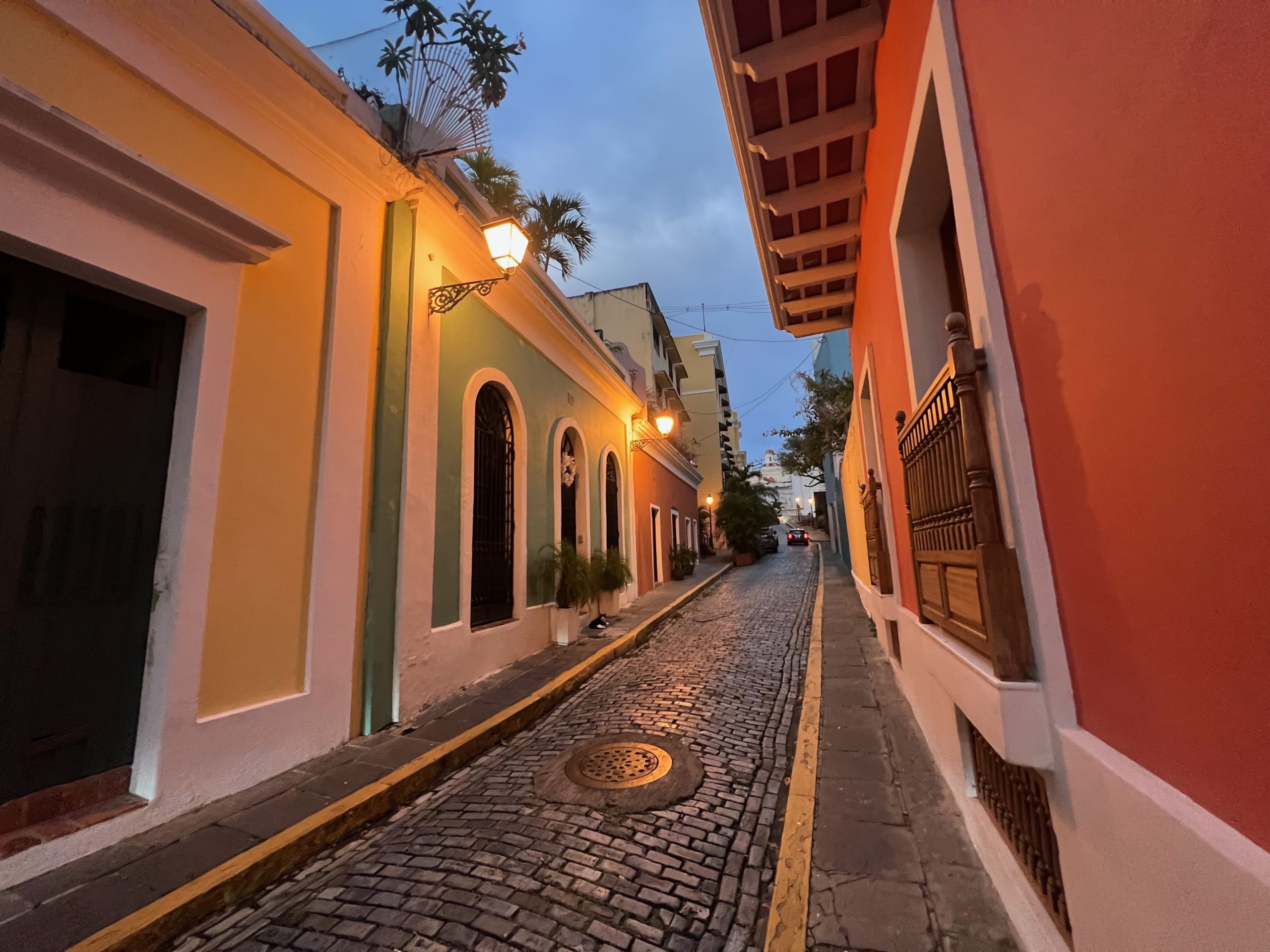
The human bust I refer to is the statue kind, which I saw on several balconies, guessing they were too ugly to keep in the apartment. The color coordination and selection of the buildings isn’t a happenstance. It’s part of the modern codes for buildings in the historic district. The plaster walls must be a different color from their neighbor’s, and I’m pretty sure they are limited to a pastel palette of yellows, tans, pinks, purples, and reds. And interestingly, the cobblestone in the cobblestone streets comes from the waste product, “slag,” from iron production. So there is irony in walking the streets of the historic district, preserving an Old San Juan that didn’t exist. Still, it has its charms.**
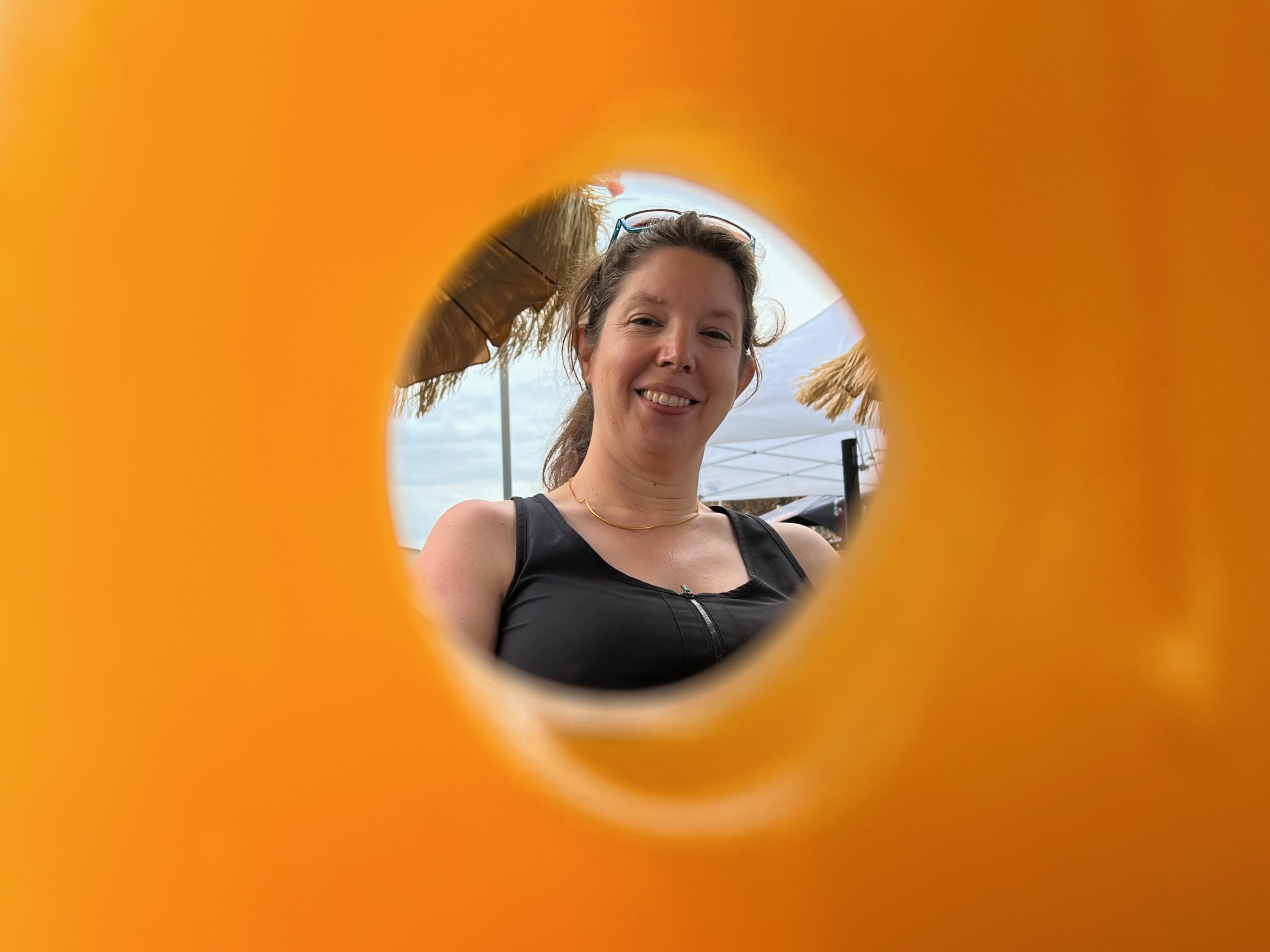
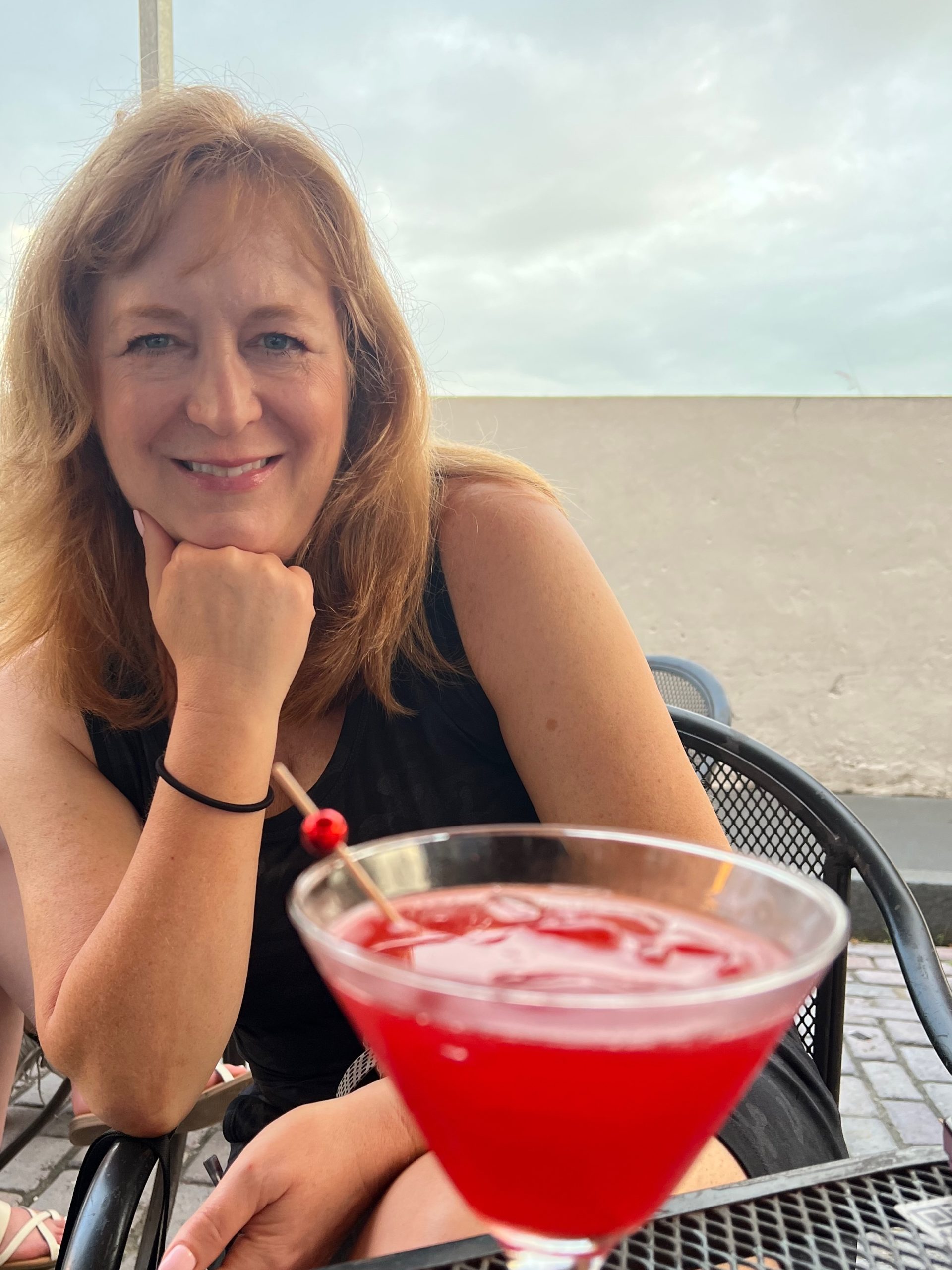
We stopped to drink martinis and sangrias out of fancy toroidal vases and listen to music at a street restaurant behind the fort’s old wall overlooking the bay. I made a mad solo dash to immortalize the fast-sinking tropical sunset over the “Bahia de San Juan” from the strategically positioned, west-facing fort walls that guarded the narrow entrance to the San Juan harbor. While I was gone, my friends abducted a baby and a single mom (Malaya and Katalina). After finishing our drinks, we forced the young lady and her daughter to wander the cobblestone streets of San Juan aimlessly for hours. The mother and daughter later escaped in an Uber.
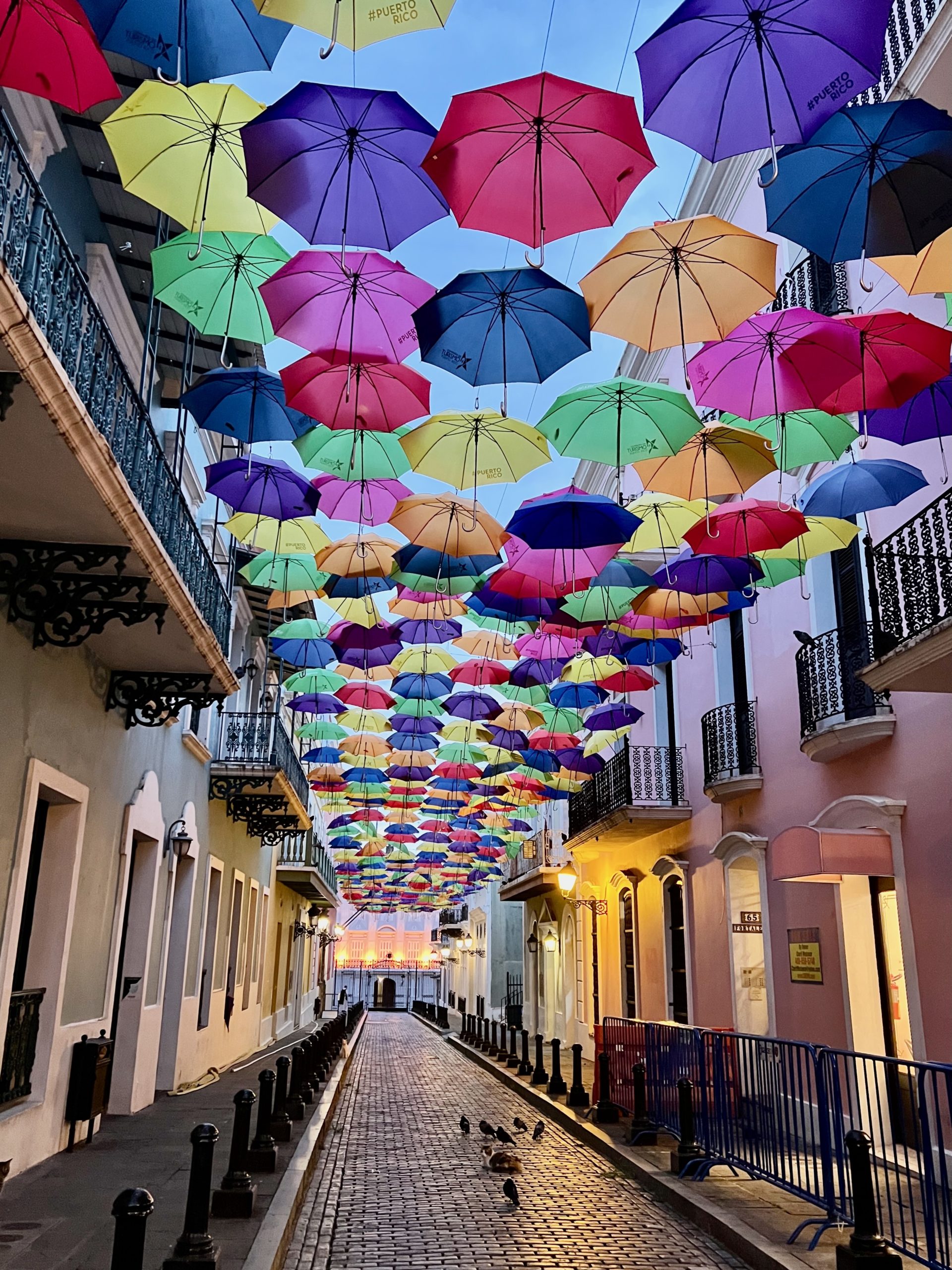
On our meandering walk through the streets, we stopped for pictures at the umbrella street, “Los Paraguas de la Fortaleza,” I had stumbled upon during my sunset absence. Walking up and down the streets in the dark, we passed the “Catedral Basilica Menor de San Juan Bautista,” the second oldest cathedral in the Americas, and the “Iglesia de San Jose” constructed in 1532, oblivious to their historical significance at the time. In the square outside the latter stands a statue of Ponce de Leon. I hadn’t realized that he came with Columbus on his second voyage and that he had been the governor of Puerto Rico for a couple of years, putting down a Tainos uprising. He was ousted by Diego Colon, the son of Christopher, before setting out on his exploration of Florida and the fabled quest for the fountain of youth. The statue is also said to be made from melted-down old British cannons**, replacing weapons with a memorial to bad memories for the Tainos descendants still on the island.
(Monday night)
A slight breeze blows through the palms. We consume a continuous supply of fruity rum drinks. People walk laps in the park. Cats casually stroll down the street. It’s a beautiful, warm Monday night, perfect for sitting out and recapping our snorkeling and hiking adventures of the day.
We entered the delightfully warm water early afternoon, and the breeze was strong enough to qualify as wind. The beach, if you can call it that, is lined with rock and reef. We entered the choppy waters through an opening in the rock and headed toward an exposed outcrop about five-hundred yards from the shore. With our attention fixed on seeing marine life, we drifted about two-thirds of the way to the rocks in a few flips of the fin. When we turned around to see how difficult it was to swim back to shore, we discovered how strong the rip was. Testing the waters, so to speak, and watching the rivulet patterns of sand on the bottom, I saw that I was making little progress swimming against the current. We were warned to wear fins, which might have been life-saving advice. Fortunately, everyone was comfortable in the water and a decent swimmer. I remember the story of my cousin who lost a friend in a rip current in the waters of Puerto Rico. Nothing like death to ruin the tranquility of a vacation.
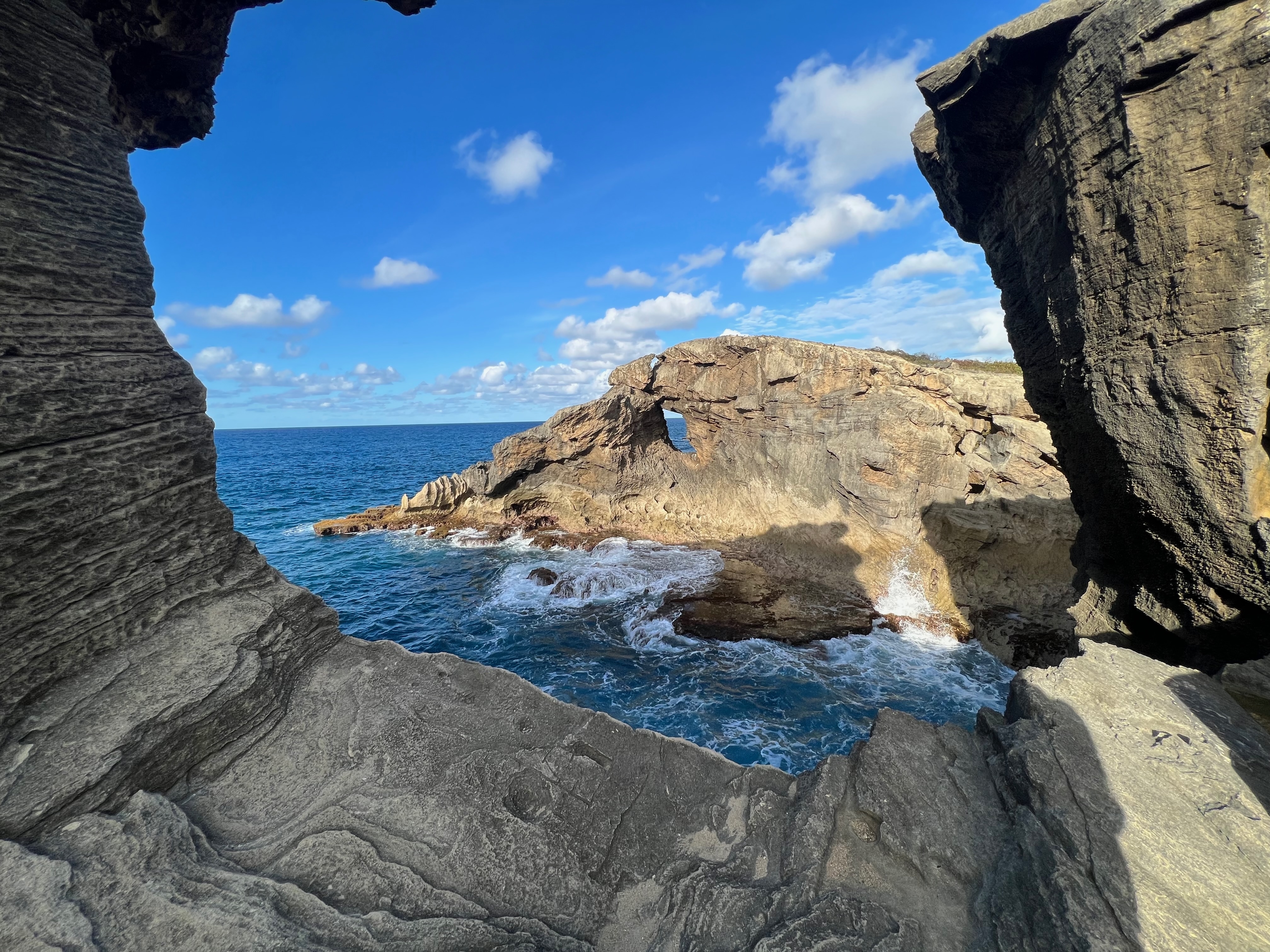
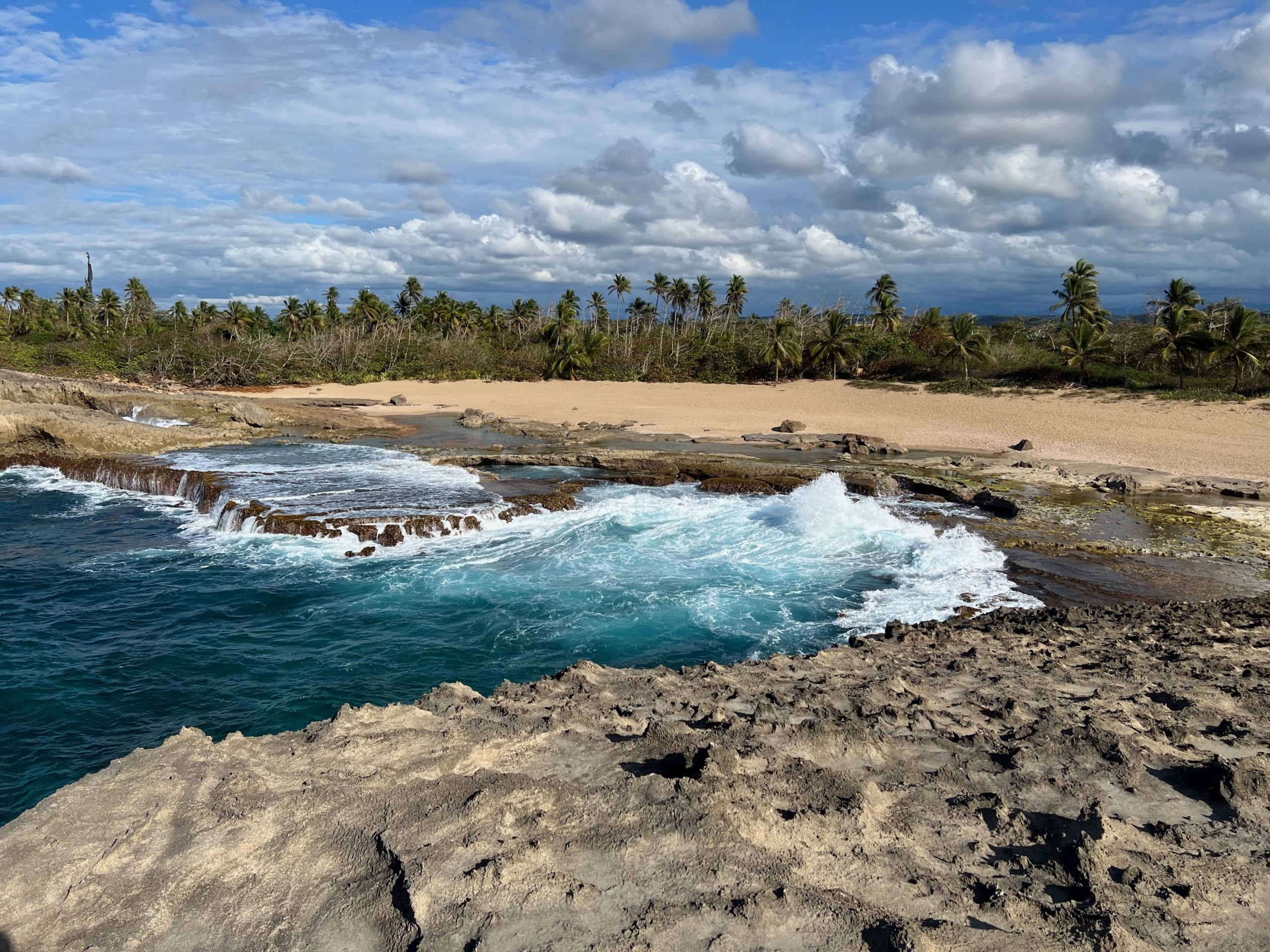
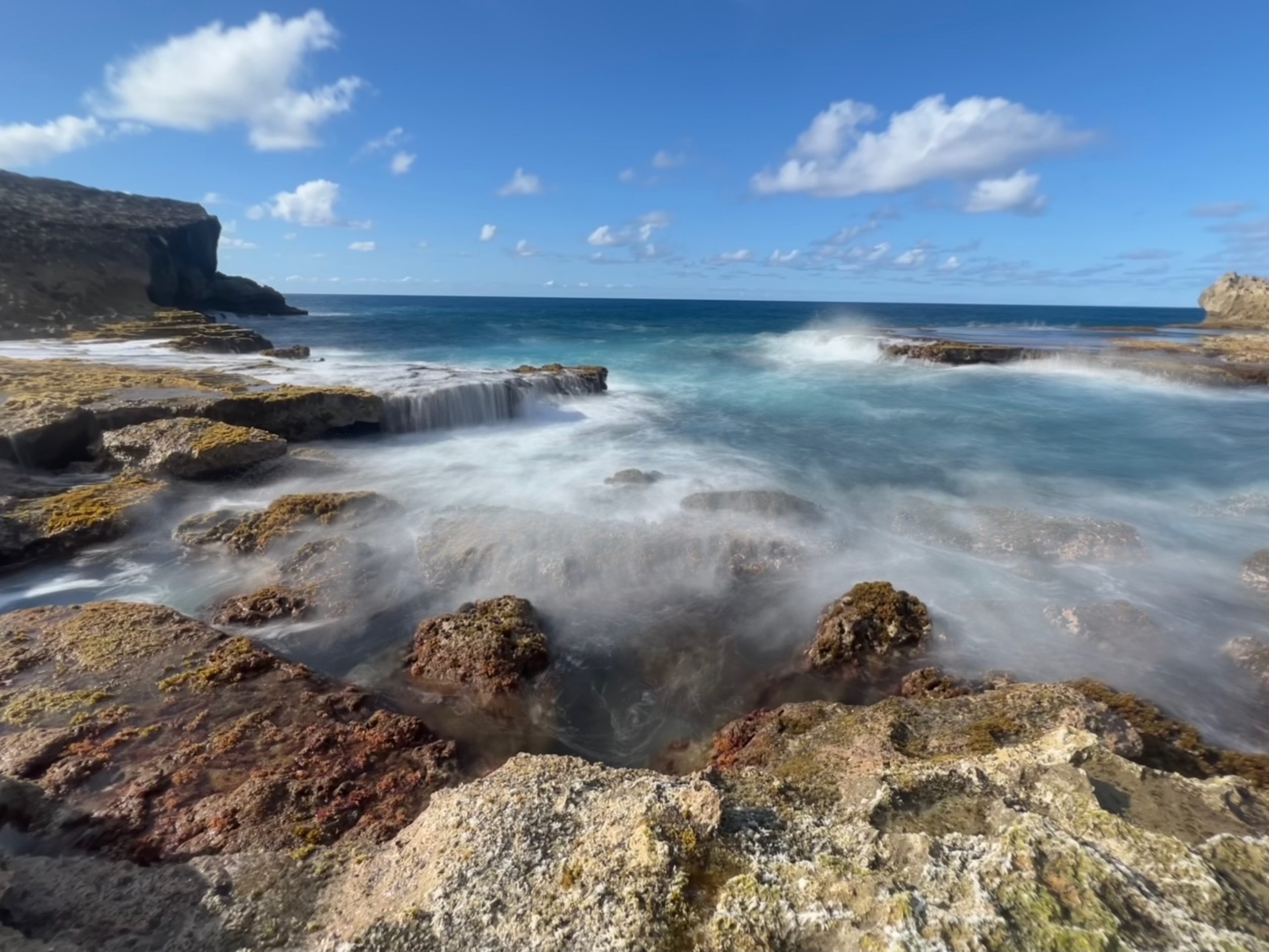
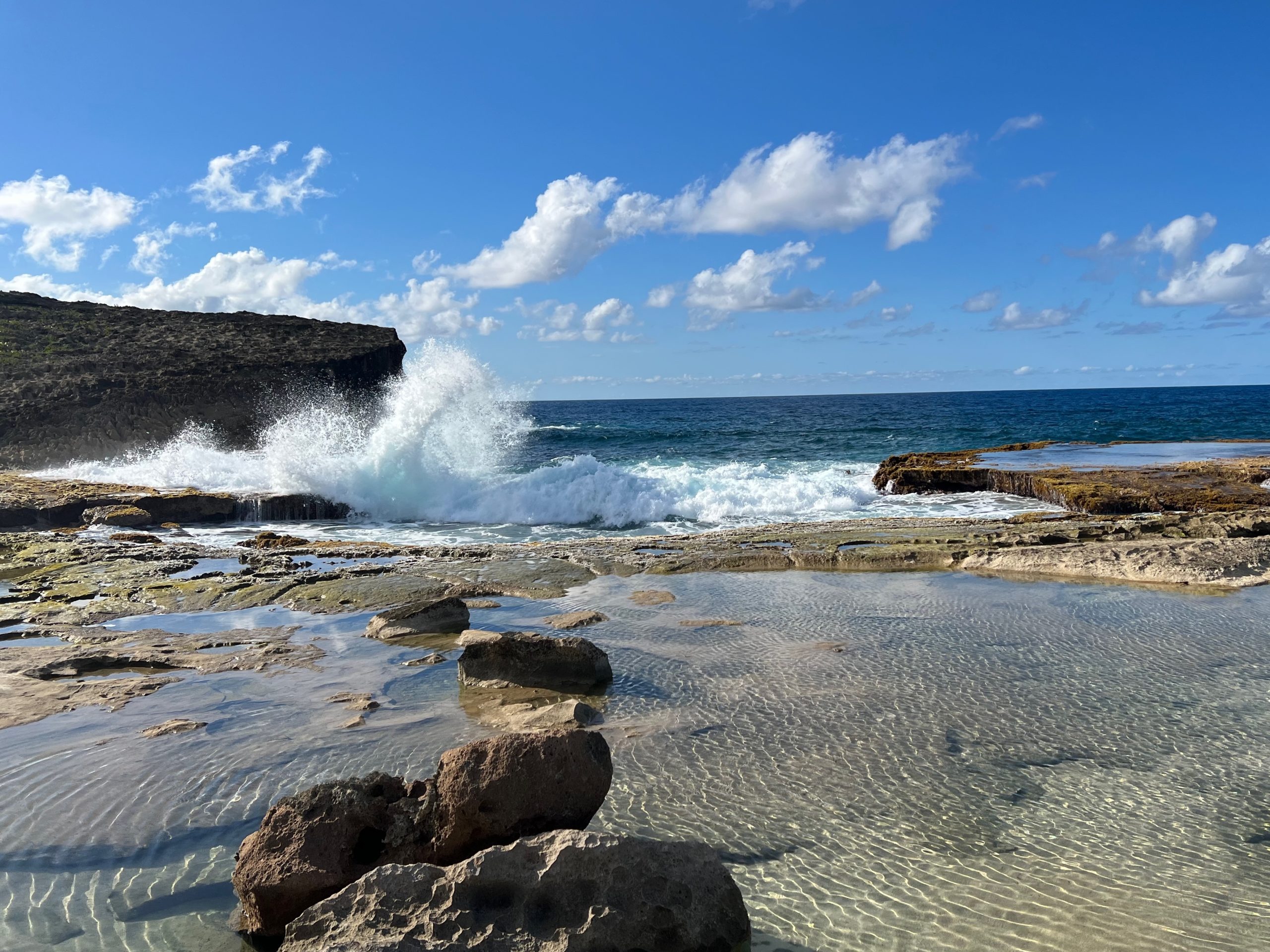
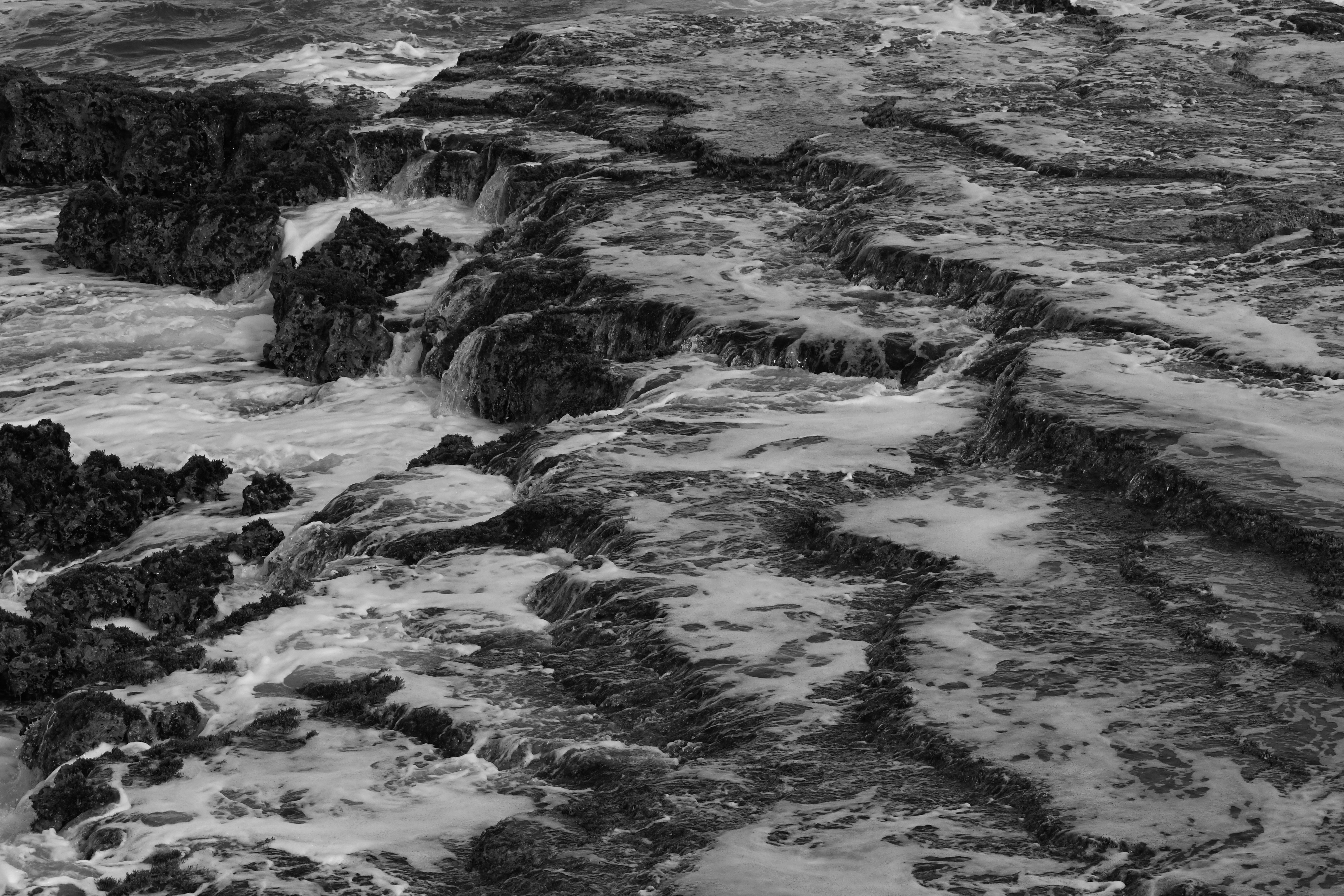
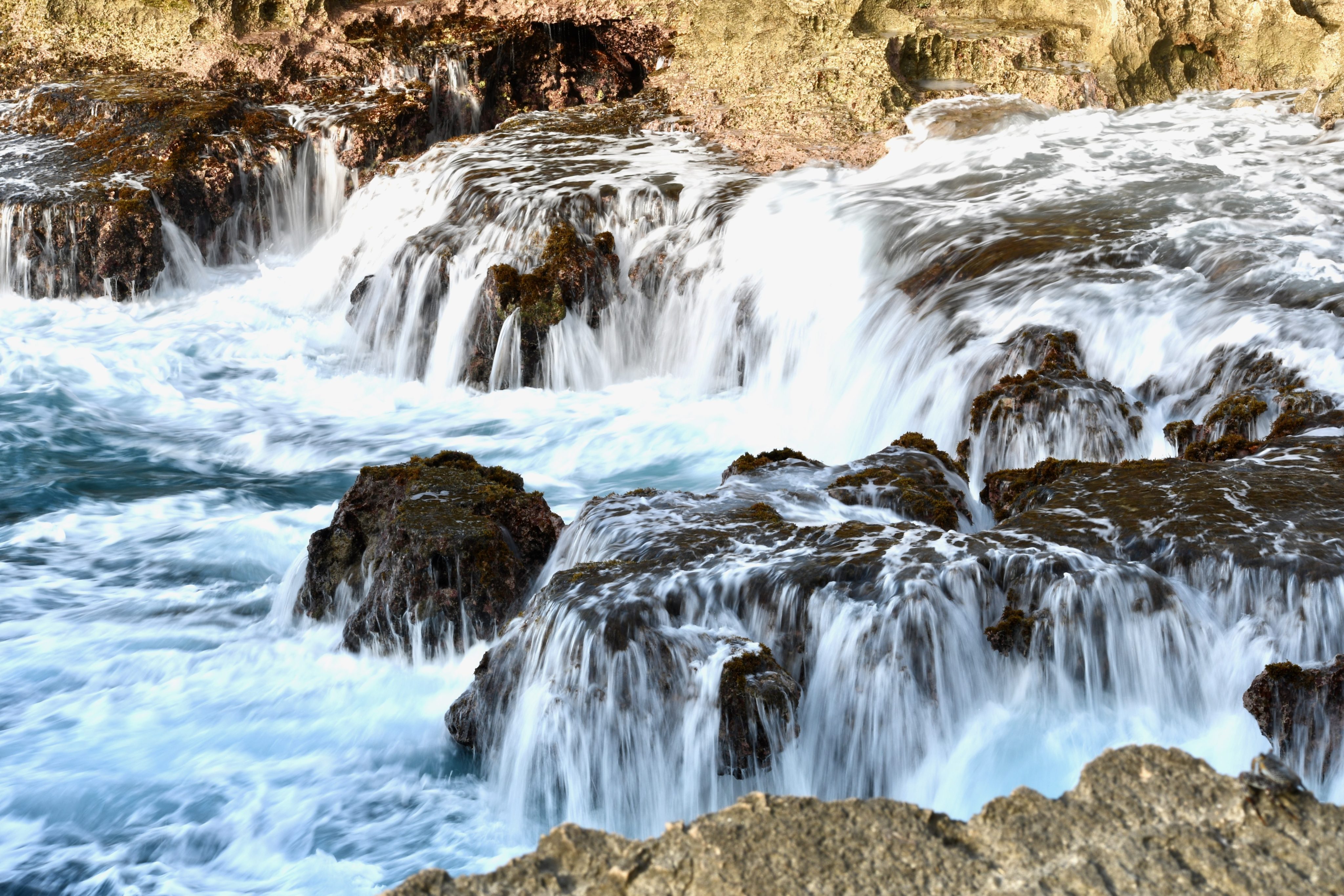
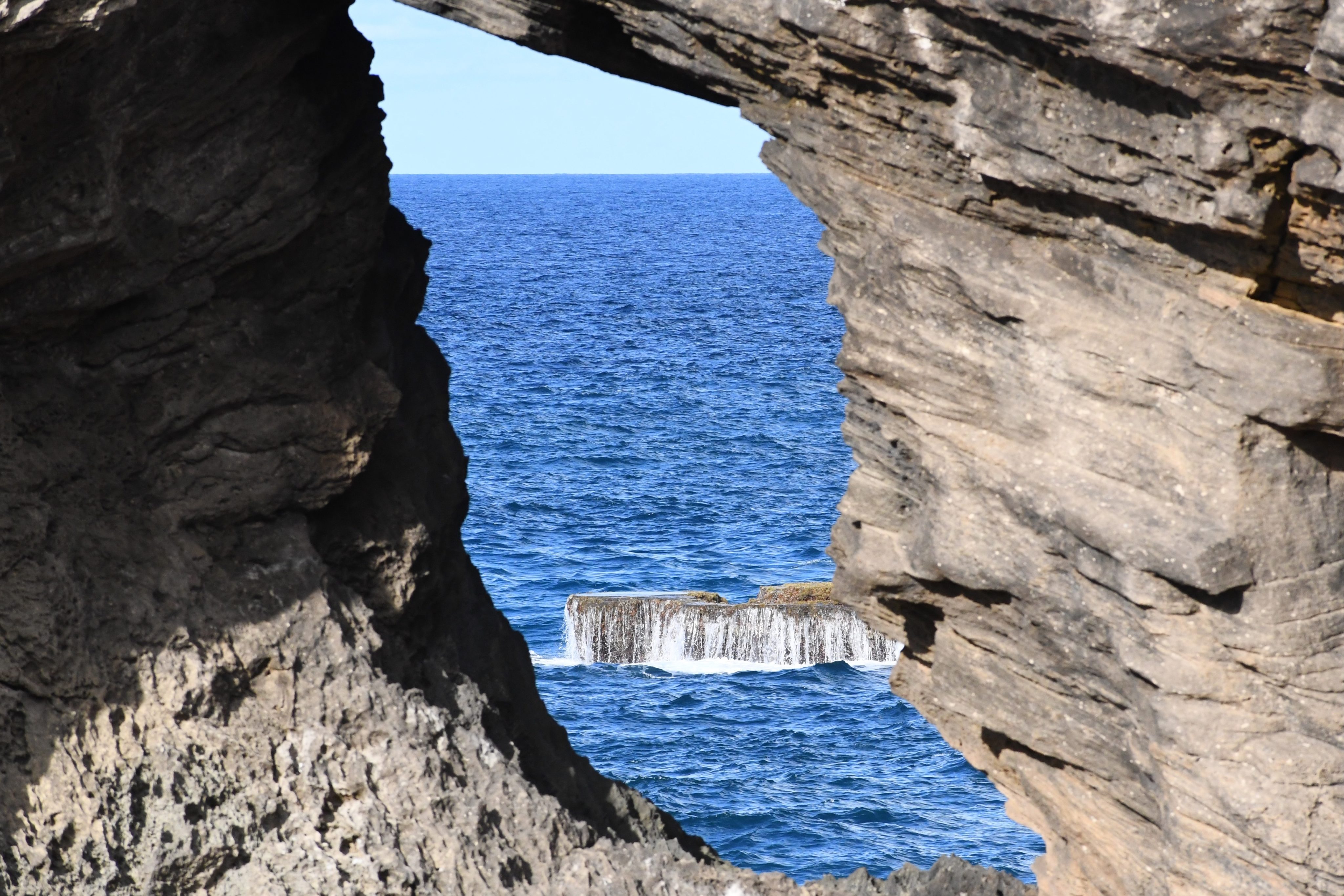
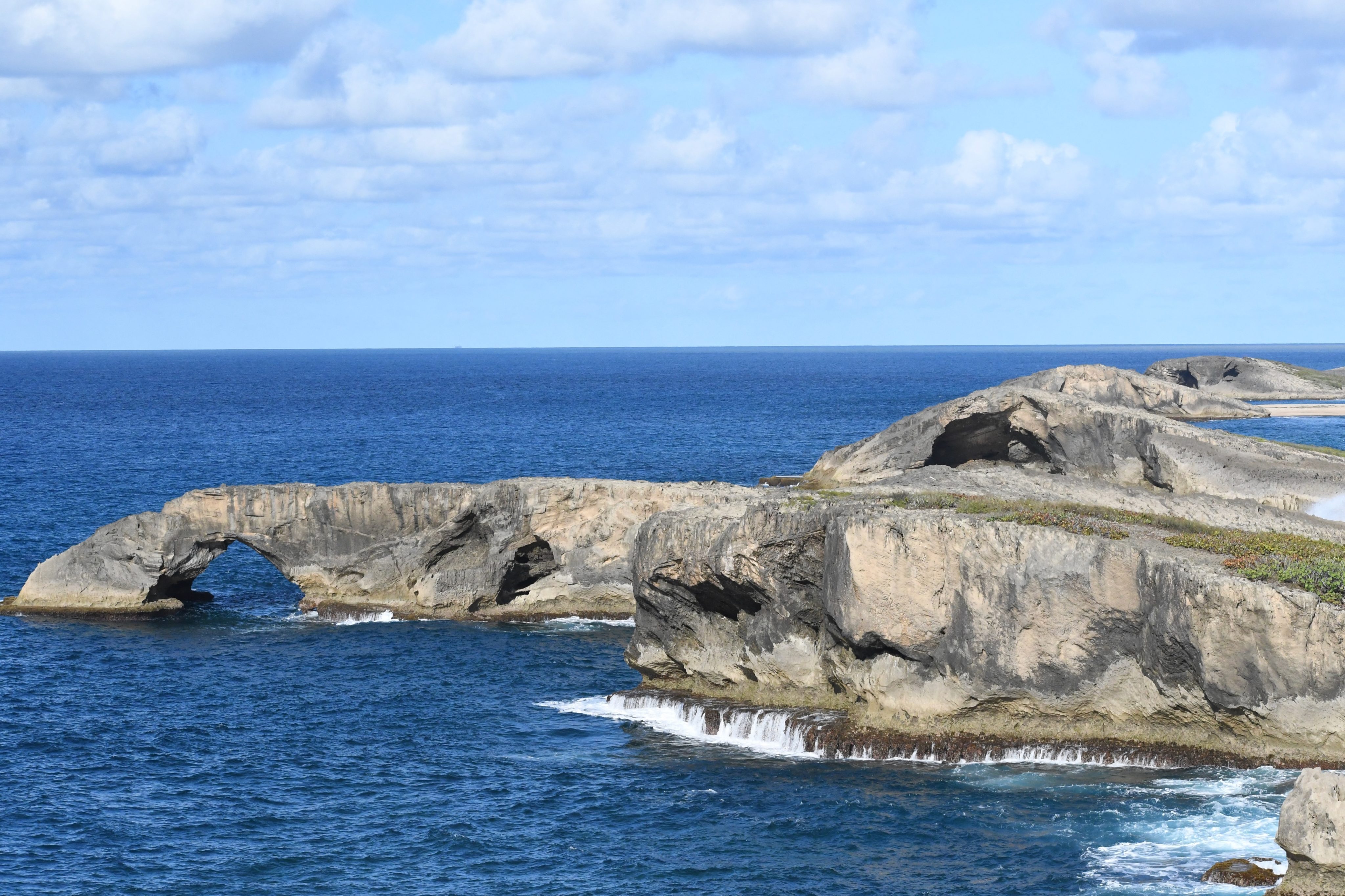
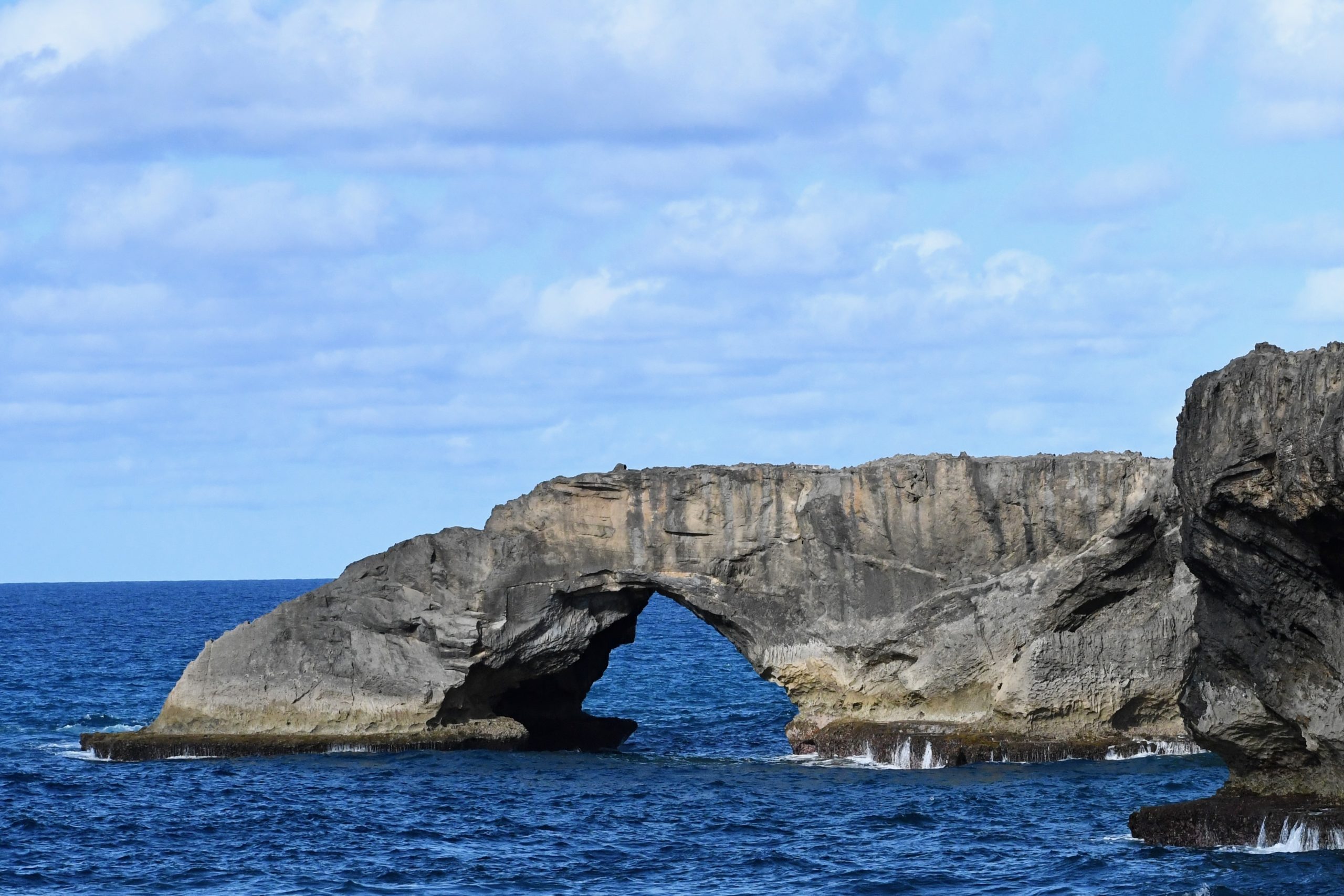
Afterward, we drove to the Cueva del Indio Nature Reserve. I missed the tourist entrance and ended up parking on the side of the road at a foot trail that led directly into the park. I read after the fact that theft rates and car break-ins are common, but we didn’t have any problems. The trail led to a rocky cove where a surging surf pummeled the rocks. We followed a treacherous path to the roof of the cave. I wouldn’t recommend a night hike in this area, as there are plenty of manhole-sized openings, and one misstep would lead to a far closer view of the hidden petroglyphs inside the cave than you would want. But the view from the top was beautiful, with vistas of eyes and arches and waves crashing into the cave walls beneath.
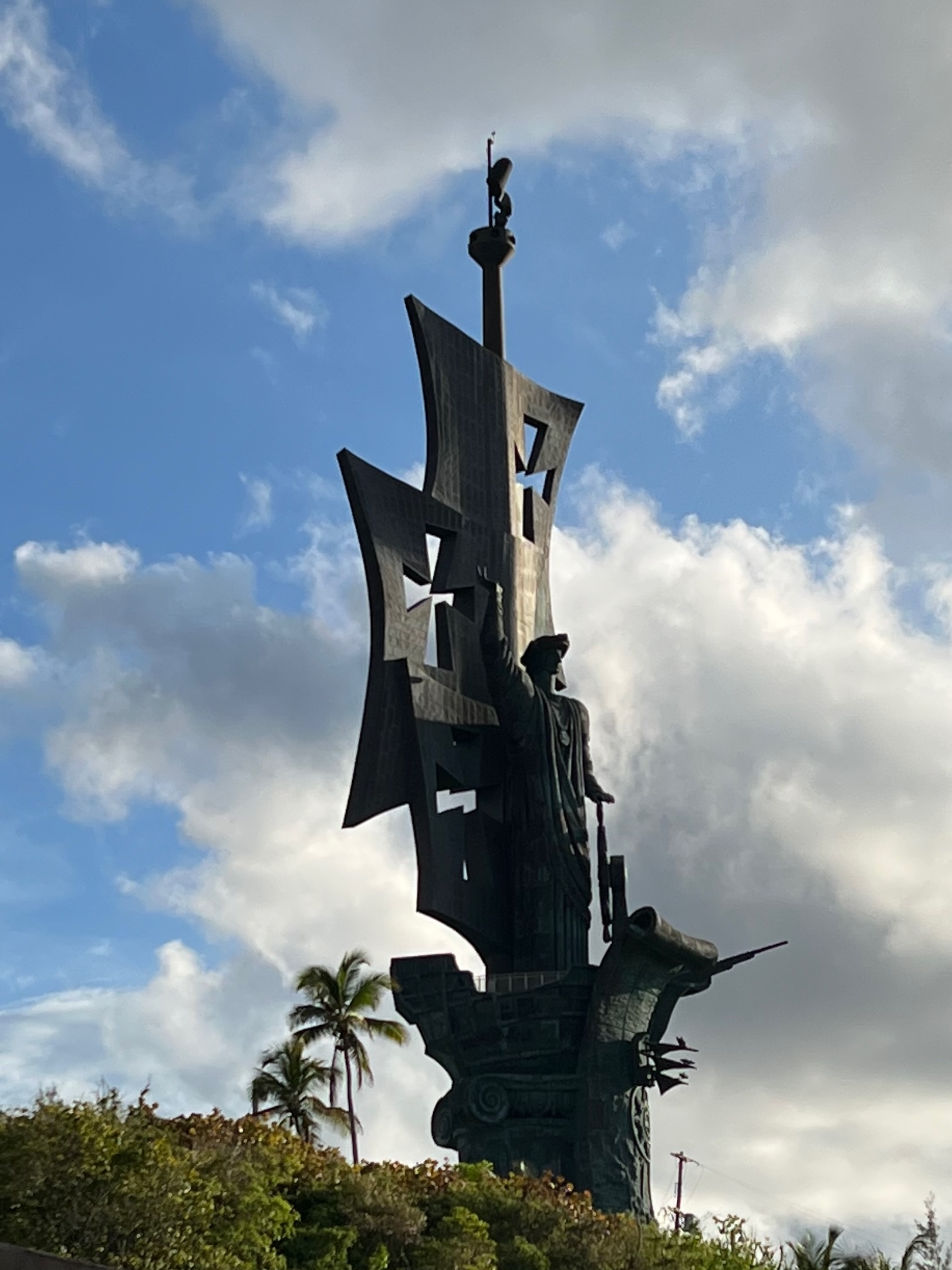
On the drive back, we stopped by to admire another statue of Columbus standing on the deck of his ship, looking out over the expanse of the Atlantic to the North.
Again, after the fact, I found this, “The Birth of the New World (Spanish: Nacimiento del Nuevo Mundo, colloquially known as La Estatua de Colón or literally Columbus’ Statue) is a 360 foot (110 m) bronze sculpture located on the Atlantic coastline of Arecibo, Puerto Rico. When completed in 2016, it became the tallest sculpture in North America…” (Wikipedia)
For reference, the Statue of Liberty is only 305 feet tall. The statue is so tall it has a red light on top of it as a warning to aircraft. I thought Columbus might have given up exploring and taken an air traffic controller job. Also, how do the neighbors feel about the birth of the new world in their backyards?
Safely back on our porch, we watched a spectacular post-sunset of horizon-hugging ribbon of day-glow orange to rosy pink stretch from the point of the sun drop to nearly its opposite while dining and drinking with neighbors. The night was busy with walkers taking evening strolls at the fitness park. Parrots nested at the top of the taller palms. You could hear their squawks, but getting a clear or close enough view for a picture through the foliage of the tall palms was a challenge.
The moon and what I thought was Venus lit the western sky. It turns out that Venus is actually satellite 1443 put up in the sky by some nefarious company to watch over us. Strange that it didn’t move like most satellites you usually see drifting across the sky, but I suppose that is part of the camouflage.
We saw the camouflage store trying to hide near Walmart a previous day. One wouldn’t expect to see a camouflage store, but there it was in plain sight.
The party and dinner guests migrated to the second-story deck of neighbor Fred, the seventy-seven-year-old retired mailman enjoying the work on his Puerto Rican home, and his extended family of Ida, Angel, and Maria. The revelry was broken by personal space violations by the local schizophrenic, who traces his roots back to Napoleon, Jefferson, Einstein, Hitler, and Rockefeller, to mention a few. Despite the hiccup, the night was spent street viewing, pool playing, tug of warring with Luna (dog), tequila shots, and despite vehement protests of things you can’t unsee, dancing. Undaunted, I did me.
(Tuesday night)
A slight breeze blows through the palms. People walk laps in the park. Cats casually stroll down the street. We consume a continuous supply of fruity rum drinks. It’s a beautiful, warm Tuesday night, perfect for sitting out and recapping our El Yunque National Forest adventure.
El Yunque National Park is on the east side of the island, making this the fifth transit of the length of the island in four days. I vaguely remember talking about expatriates. Expatriate used to mean someone that was kicked out of the native country. Now it means someone who voluntarily leaves their native land. Leaving the country is a frequent conversation among my friends approaching retirement age. Technically, you aren’t an expatriate if you live in Puerto Rico since it is a U.S. territory and you haven’t left the country.
The gatekeepers had my name on a reservation list and checked it. So a cautionary note if you go, make sure you have a reservation. The drive to the top was slow and twisty. Our carsick passenger was leaning to the window, preparing to leave more than footprints in the National Forest. She was in much better shape once behind the wheel.
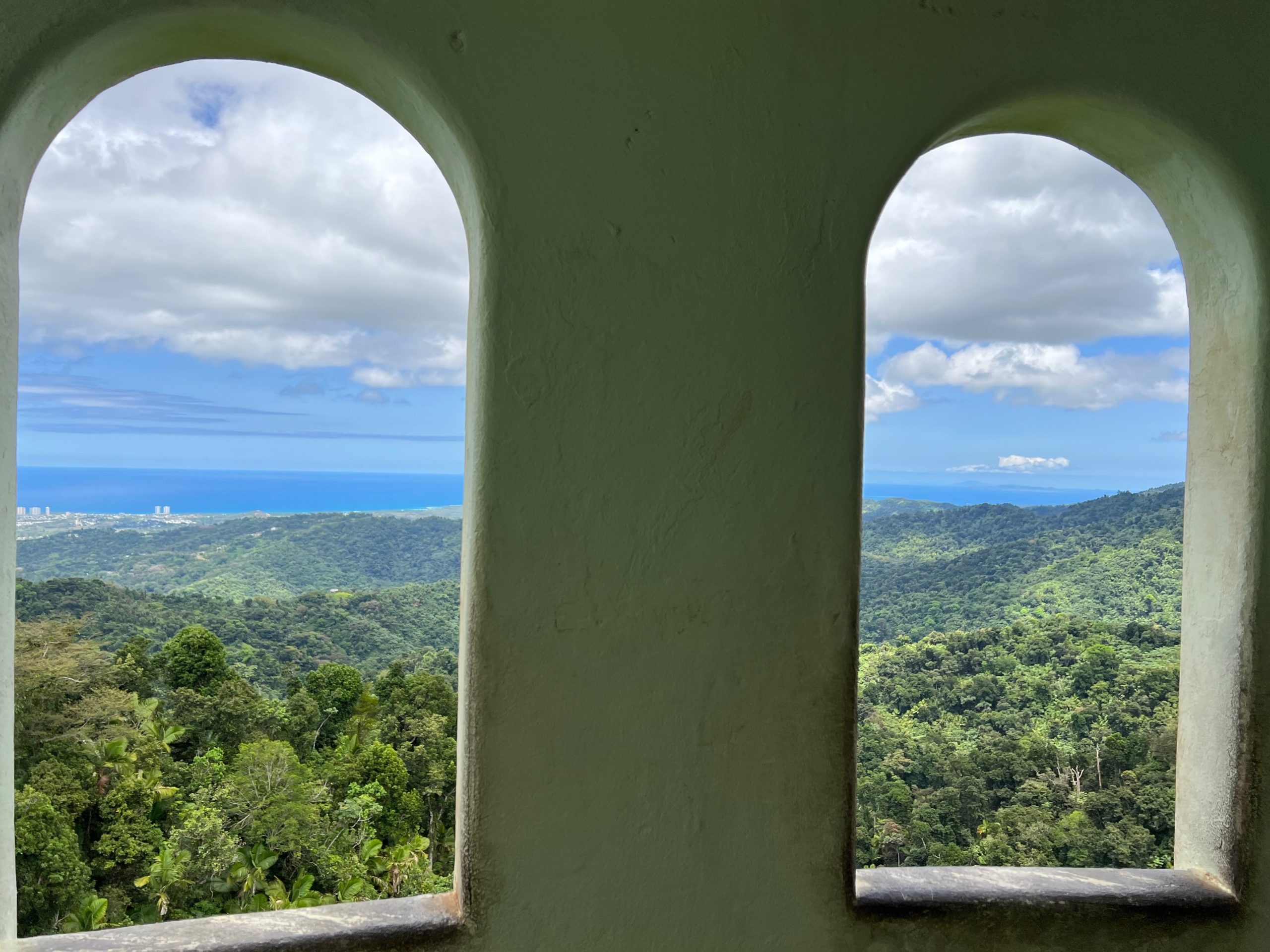

Our first stop was Yokahu Tower. A placard informed us that there are over 200 species of trees in the forest. I can’t vouch for the diversity, but I can vouch for the density. From the top of the tower, we could see the rainforest in any direction, and to the east, views of Culebra and Vieques Islands, also part of Puerto Rico.
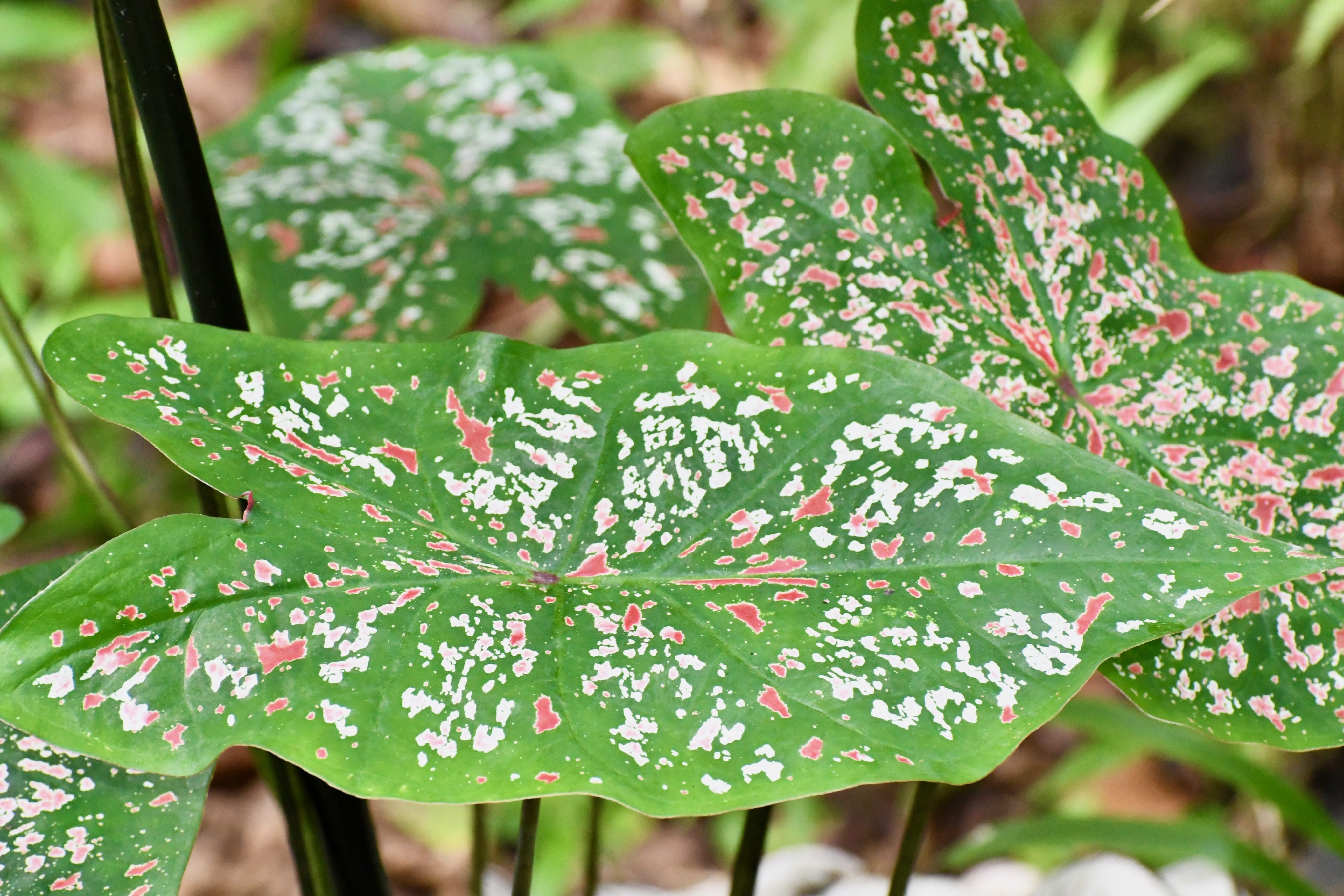
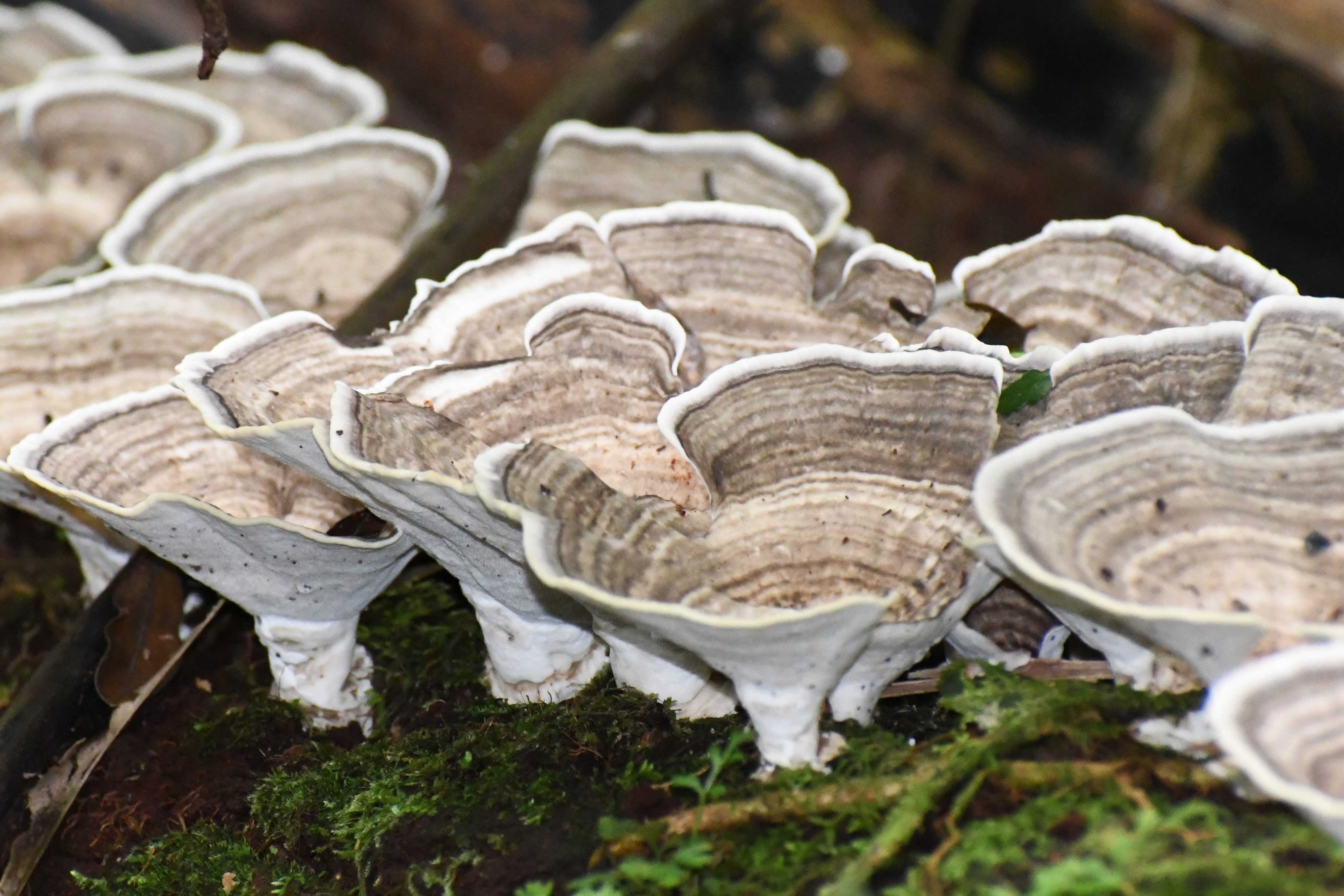
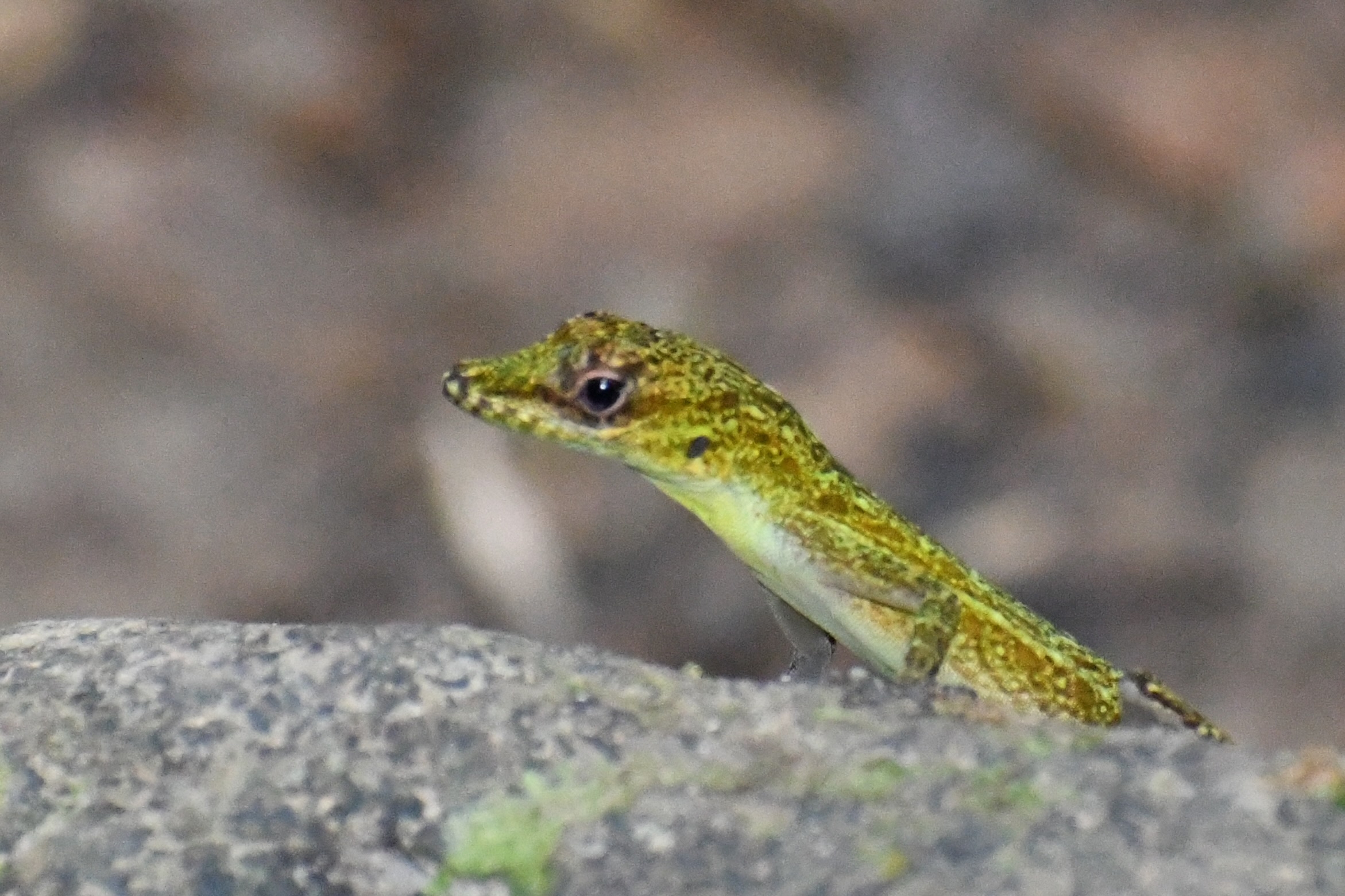
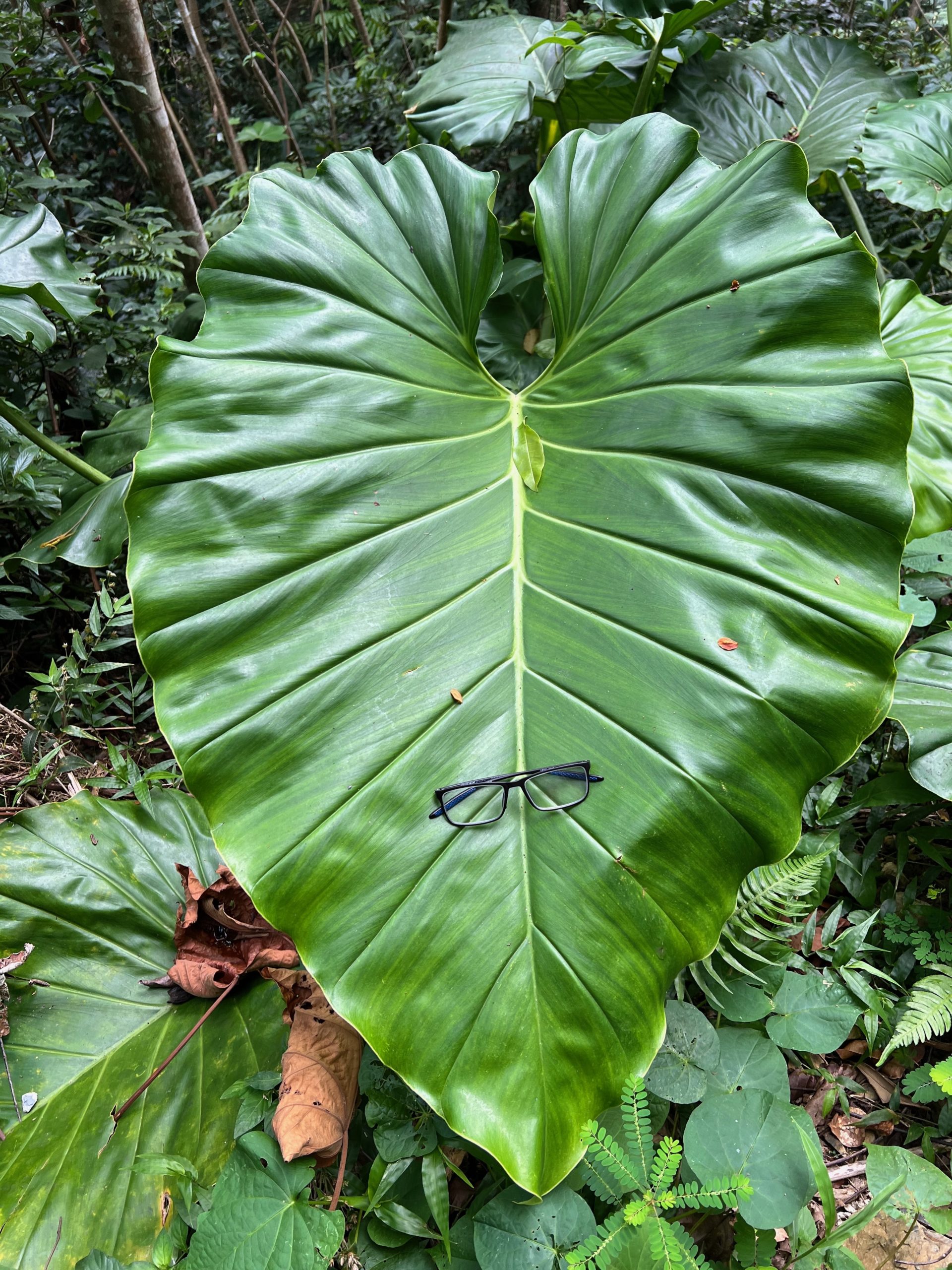
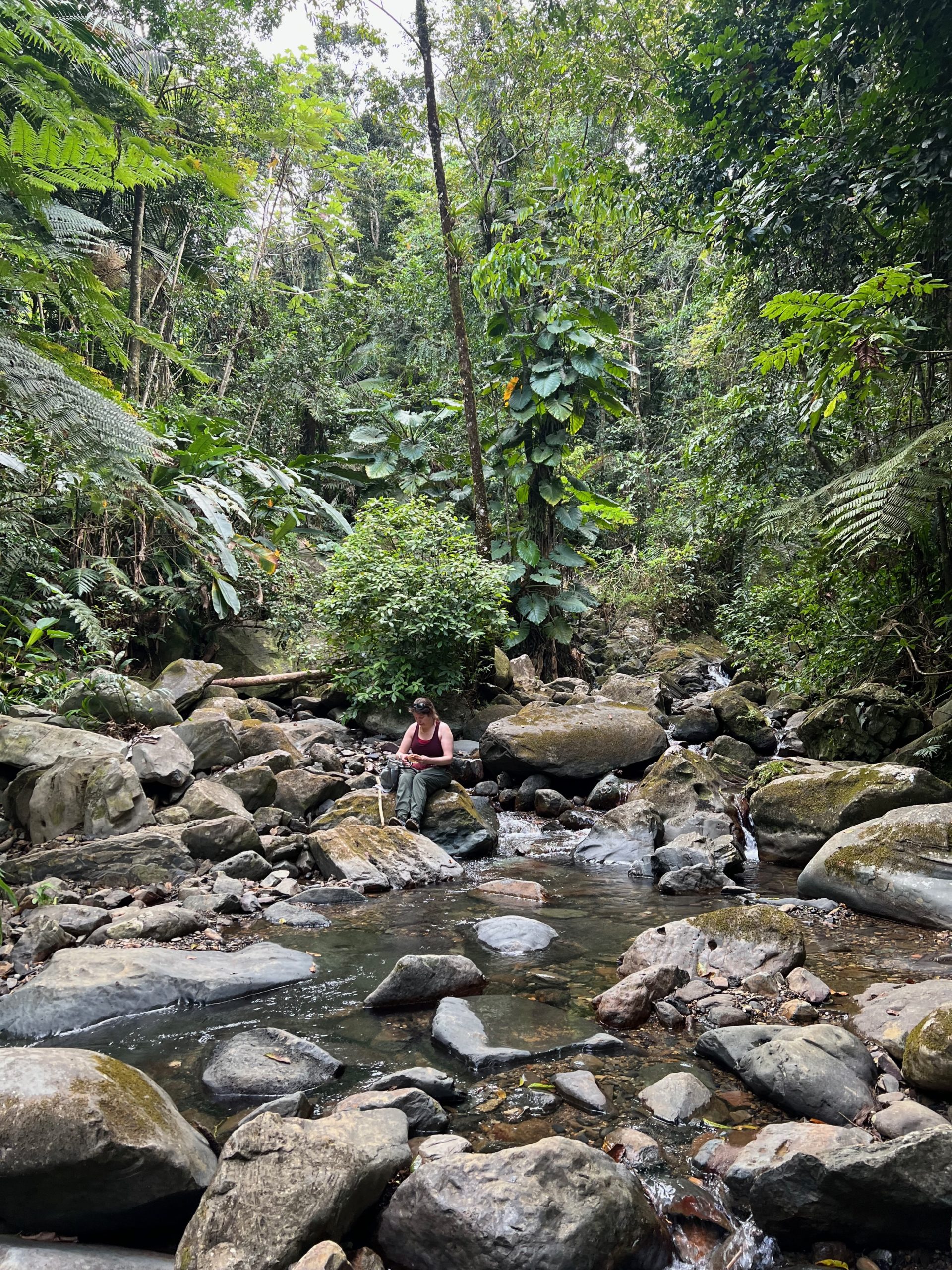
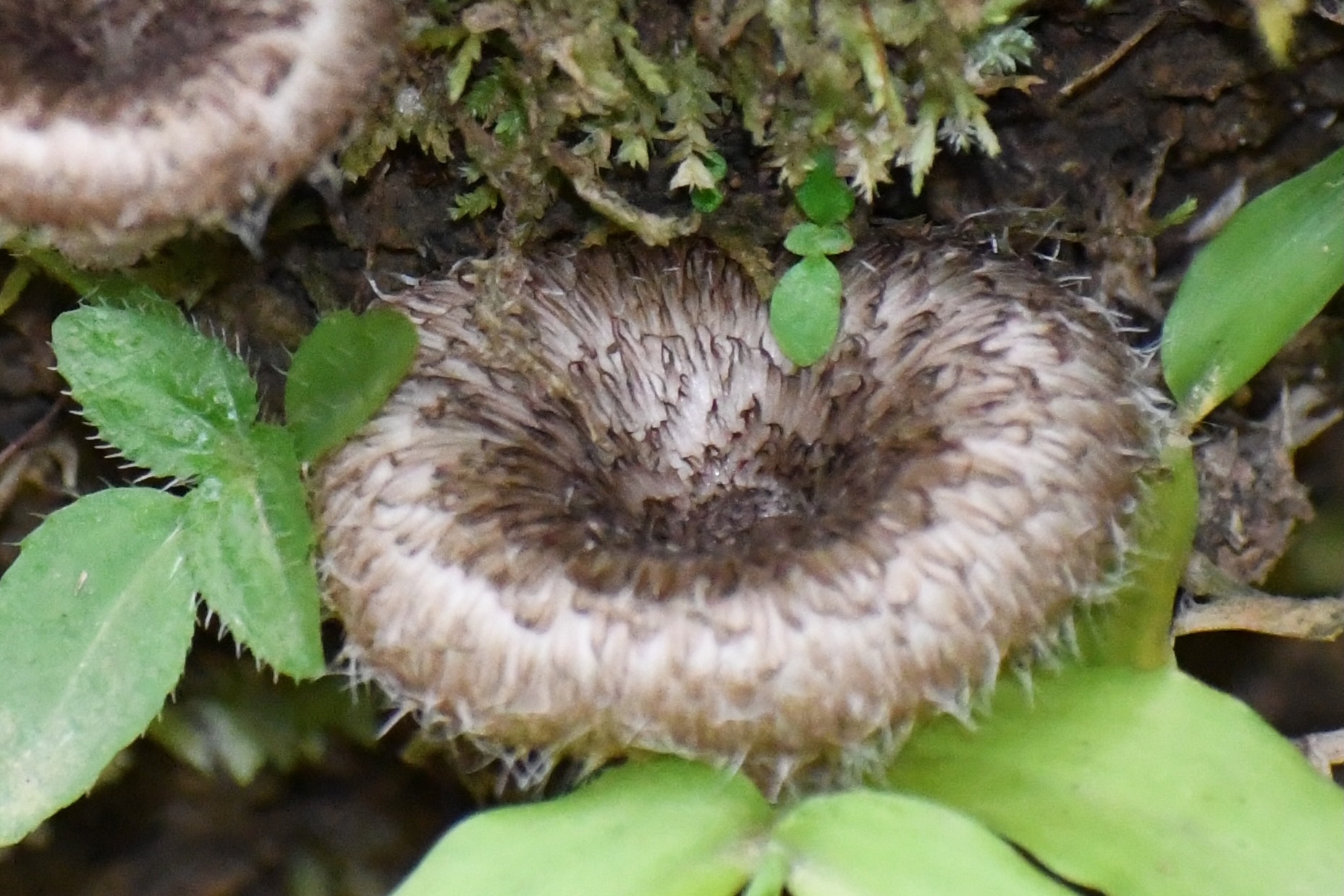
We set out on the La Coca trail, a 1.8-mile trail in the thick of the rainforest. The path goes downhill on the slippery rock for about a half mile to a river crossing. It then goes downhill on even more slippy rock and mud for another half mile to another river crossing. We didn’t make the last eight-tenths of a mile, but if the pattern persisted, it would have been steeper and muddier than the rest. The trail is rated as difficult; each step tests balance and agility, negotiating downhill mud, roots, and rocks, not all of which were passed. No names will be mentioned.
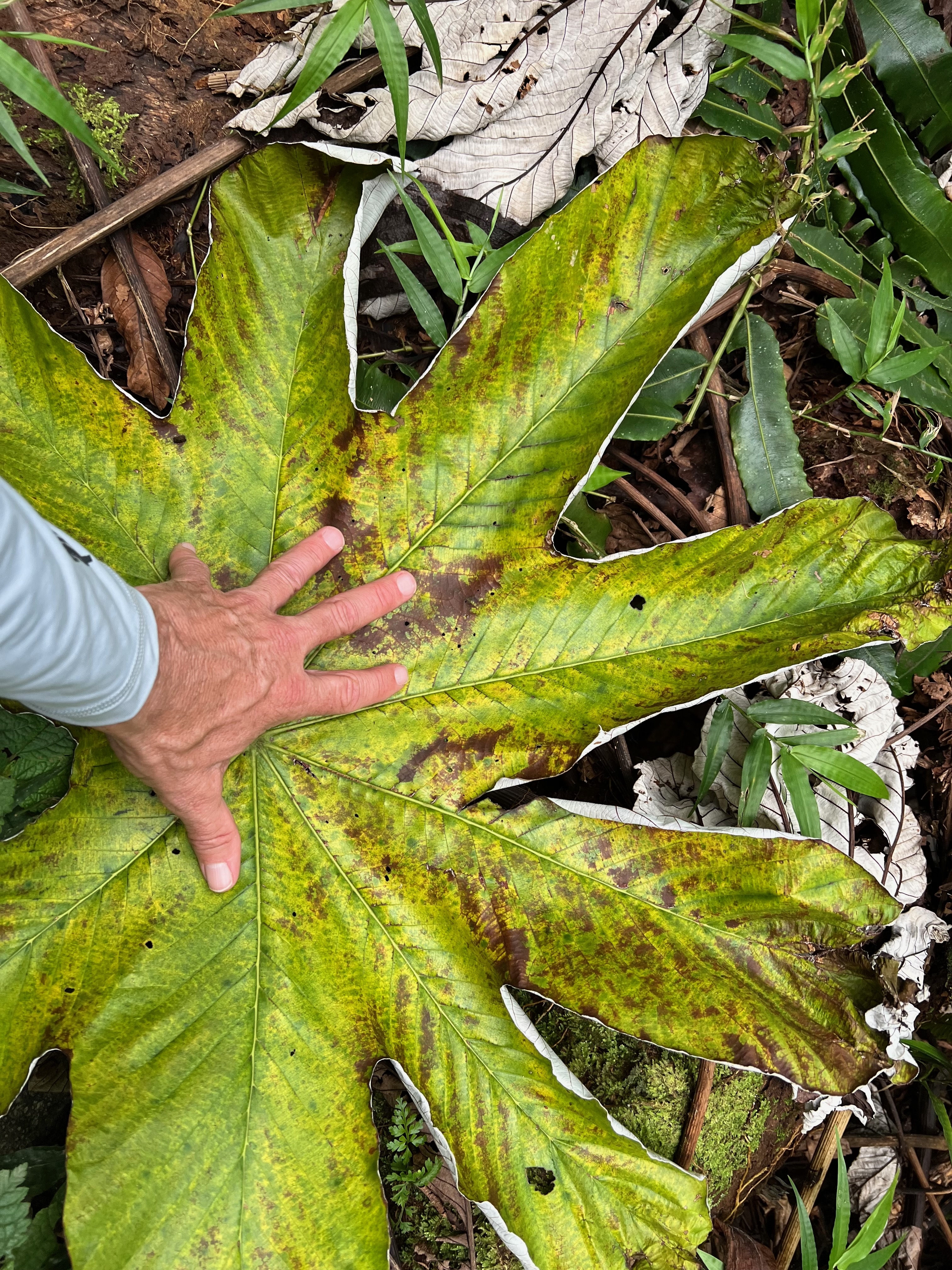
The tropical rainforest is covered with hanging George-of-the-Jungle vines and large-leafed trees. We saw the scale-like flowers of wild heliconias, the enormous leaves of philodendrons, and the Jurassic Park-like ferns. I could fit my extended hand inside a hand-shaped leaf of a Trumpetwood without my fingers extending to the finger-like lobes. And I could have used a giant philodendron leaf as a blanket. The giant philodendron is poetically called Giant Elephant Ear. I looked hard for mushrooms, but surprisingly not that plentiful. Still, I was rewarded with some interesting finds.
The strangest thing we saw was a not-too-slight woman carrying a baby in her arms up the treacherous trail. She had no backpack, diaper bag, or carrier of any kind. She didn’t look like the kind of person that hiked trails regularly or on any basis. If I didn’t know better, I would swear she found the baby in the woods and decided to keep it.
We stopped at the second river crossing to admire the cascades and eat a late lunch on the river rocks. After one mile, knees already sore from the descent and worried about making it out before the gates were locked, we headed back. Not to my surprise, we made better time up than down. It’s a more strenuous effort to climb but not nearly the struggle to keep from falling. We made it back, bedraggled from the hike and the humidity, but successful nevertheless.
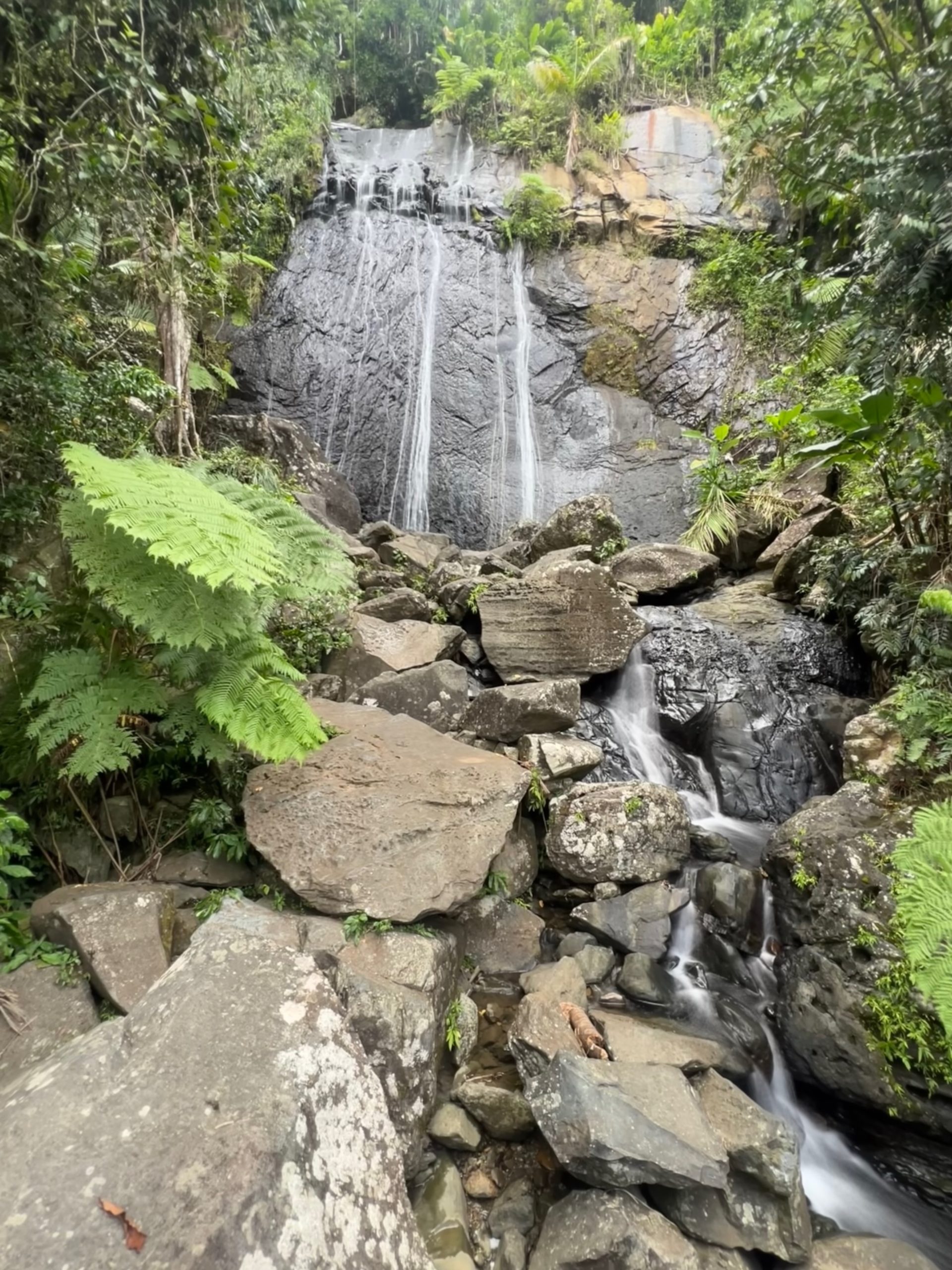
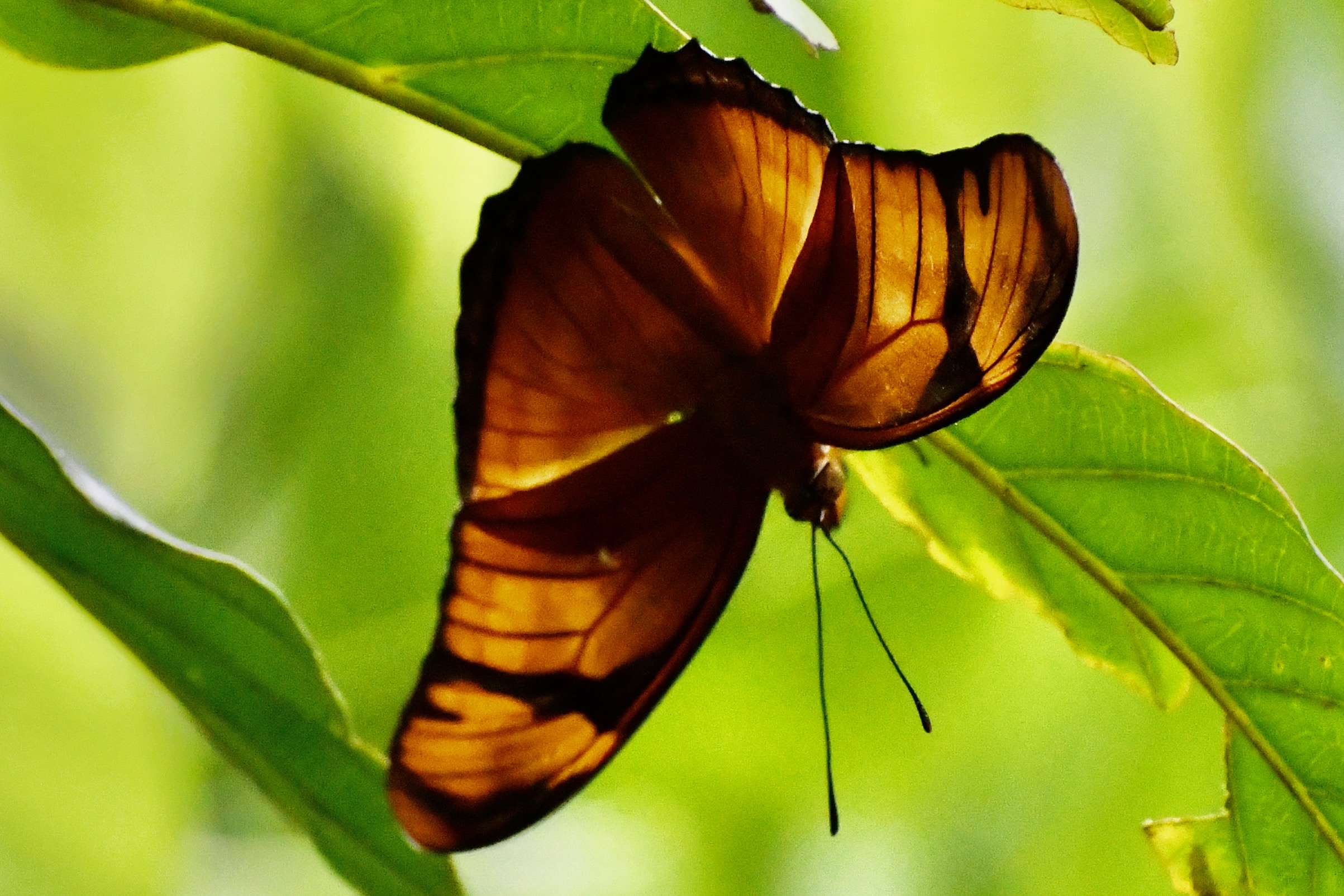
On the drive out, we made one last stop at the La Coca Falls, slight streams of water tearing down black rock framed by giant fern fronds and thick forest, where I mean tearing in the sense of crying tears, not in the meaning of ripping something apart.
(Wednesday night)
A slight breeze blows through the palms. We consume a continuous supply of fruity rum drinks. Bats race up and down the street, consuming lacy insects in the blue hour. It’s a beautiful, warm Wednesday night, perfect for sitting out and watching one of us work under the gazebo in the park, where we usually see Zumba and yoga classes in the later and cooler hours of the evening. While she works, we recap our Gozalandia waterfall adventure.
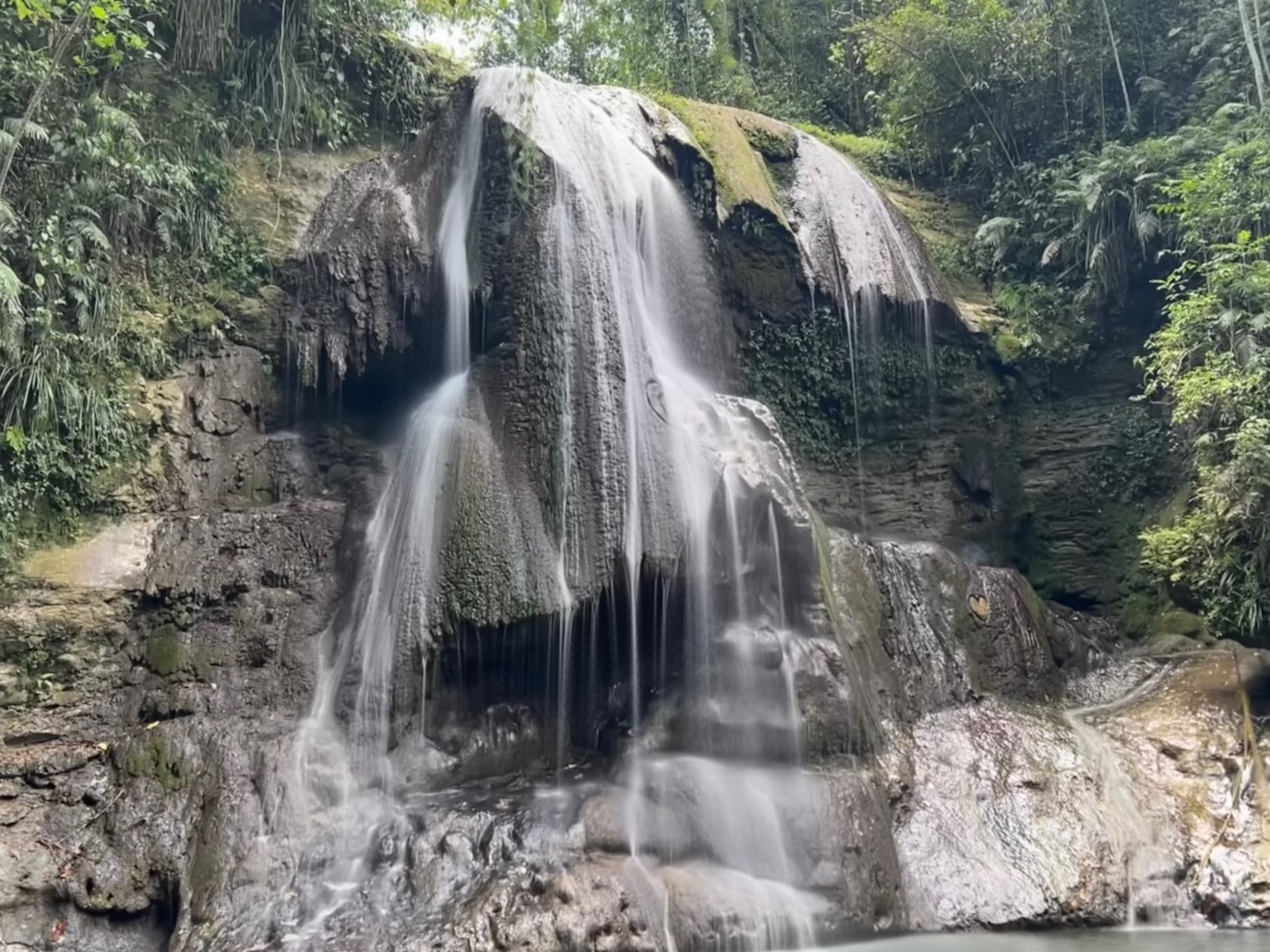
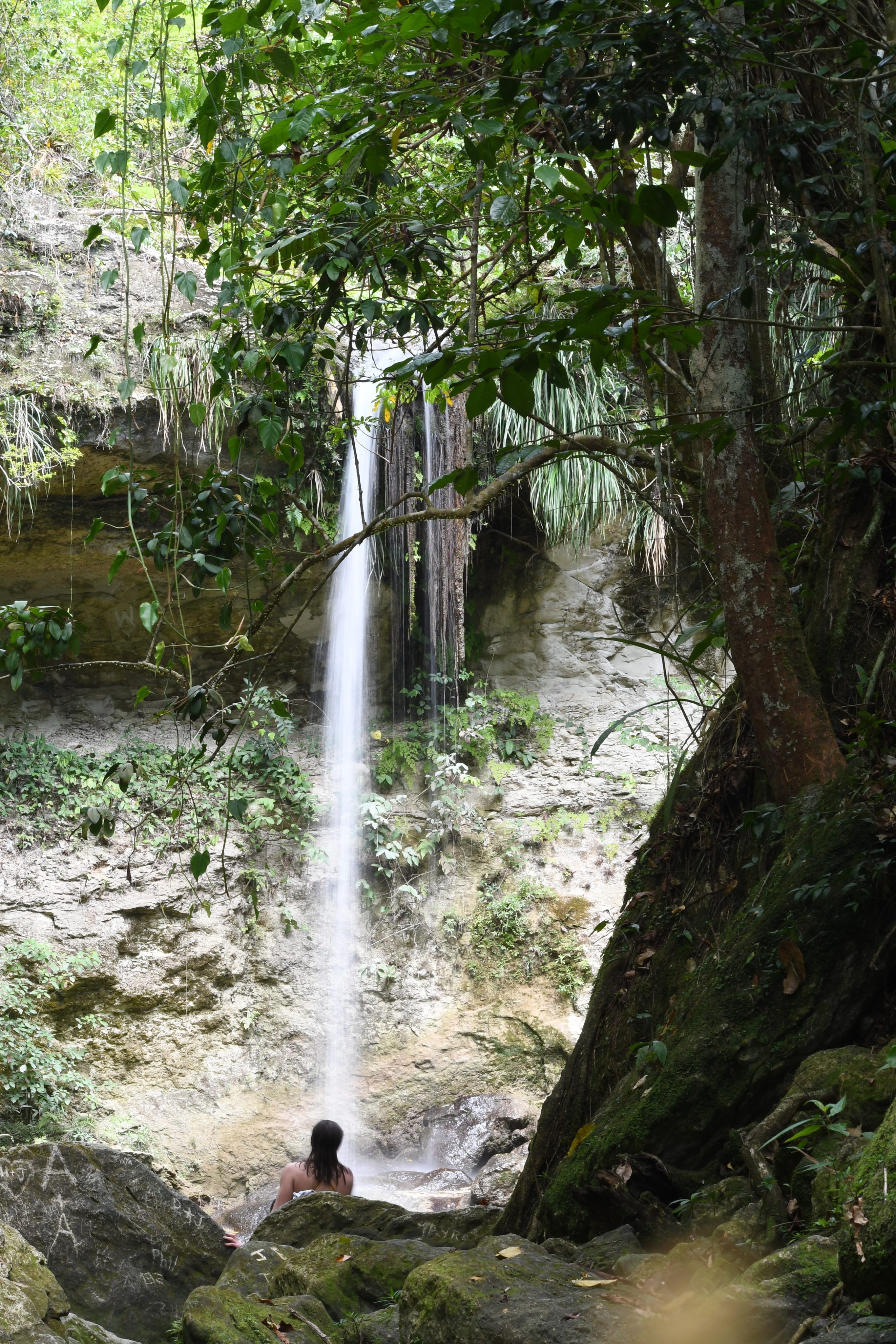
The Gozalandia waterfalls are a short drive into the interior. We found the not-so-obvious detour at the reservoir that took us up one of the steepest grades of any paved road I remember. We became familiar with the word lomo, a yellow diamond road sign used to caution drivers of a hill with an obscured view of traffic from the other direction. While I drove, the girls discussed the color schemes and investment opportunities of the properties along the way.
Gozalandia has an upper and a lower waterfall. We chose the ten-minute, snake-infested walk to the upper waterfalls first. (Okay, I exaggerate, one of us nearly stepped on a tiny snake that quickly darted into the underbrush). The thirty-or-so-foot waterfall is a strong bathroom shower of water onto a pile of rocks with a deep pool at its base. A jumping rock to the side gets a lot of use. I foolishly jumped from the highest level and managed to tweak my previously injured shoulder on entry. It wasn’t a bad jump, but enough to jolt my weak shoulder. I’ve had this kind of injury before, and I knew it would swell even if it wasn’t that painful initially. As of this writing, a week later, I still can’t raise my arm above my shoulder, and it hurts like a son-of-a-bitch.
We visited the lower falls. The lower falls are higher and broader, and the more picturesque of the two, and of course, the more crowded. Most attention is centered on a thirty-foot jump about halfway up the sixty-foot face. Quite a few people did it, and definitely, a few that shouldn’t have. It’s pretty nerve-wracking to watch, but no one injured themselves except one guy that back-flopped. One positive thing to note is that if you kill yourself on the falls, it will all be on video, probably posted before they get your body to the hospital. And sadly, there are such videos on YouTube. Nothing like death to ruin the tranquility of a vacation.
After, we stopped at the park restaurant for mojitos and mofongo. Mofongo is a Puerto Rican dish with plantains as its main ingredient. I didn’t order any, but it’s the first time I’ve heard or seen the plate.
(Thursday night)
Not even a slight breeze blows through the palms. We consume a continuous supply of fruity rum drinks and listen to Harry Belafonte and Island Music. Satellite 1443 is back in the exact spot where I would have expected to see Venus. We learn to tell time by the position of the Big Dipper. Clouds inspire Rorschach test images. Ewok eyes poke out from hole-shaped breaks in the clouds. It’s a beautiful, warm Thursday night, perfect for sitting out and recapping our non-cave, non-bioluminescence adventure.
Well, my shoulder injury tanked our kayak ride on the bioluminescent bay. So we opted for a trip to Parque Nacional de las Cavernas del Rio Camuy. While they don’t require reservations, you need reservations because they have daily quotas. When we showed up, the park had already reached its quota. So the gruff guy at the entrance refused to let us in.
So the third choice was to drive to the west coast and loop back along the northwest coast. After an hour or so of driving behind big trucks and the rumbulance, we finally emerged from the interior at Aguadilla Pueblo, a small town with an extended coastal boardwalk overlooking a boulder-strewn shoreline and deep blue seas. We could see the small Isle de Desecheo Marine Reserve in the otherwise empty waters. There was some debate as to whether or not we could see Hispaniola, but at eighty miles, it would have taken some elevation and perfect clarity to see that far. We over-ordered at the Sal de Mar restaurant, escaping the nearly ninety-degree outdoor temperatures in the air-conditioned diner. The fried fish and cheese were perfectly cooked, but the fried plantains and hushpuppies were dry and tasteless.
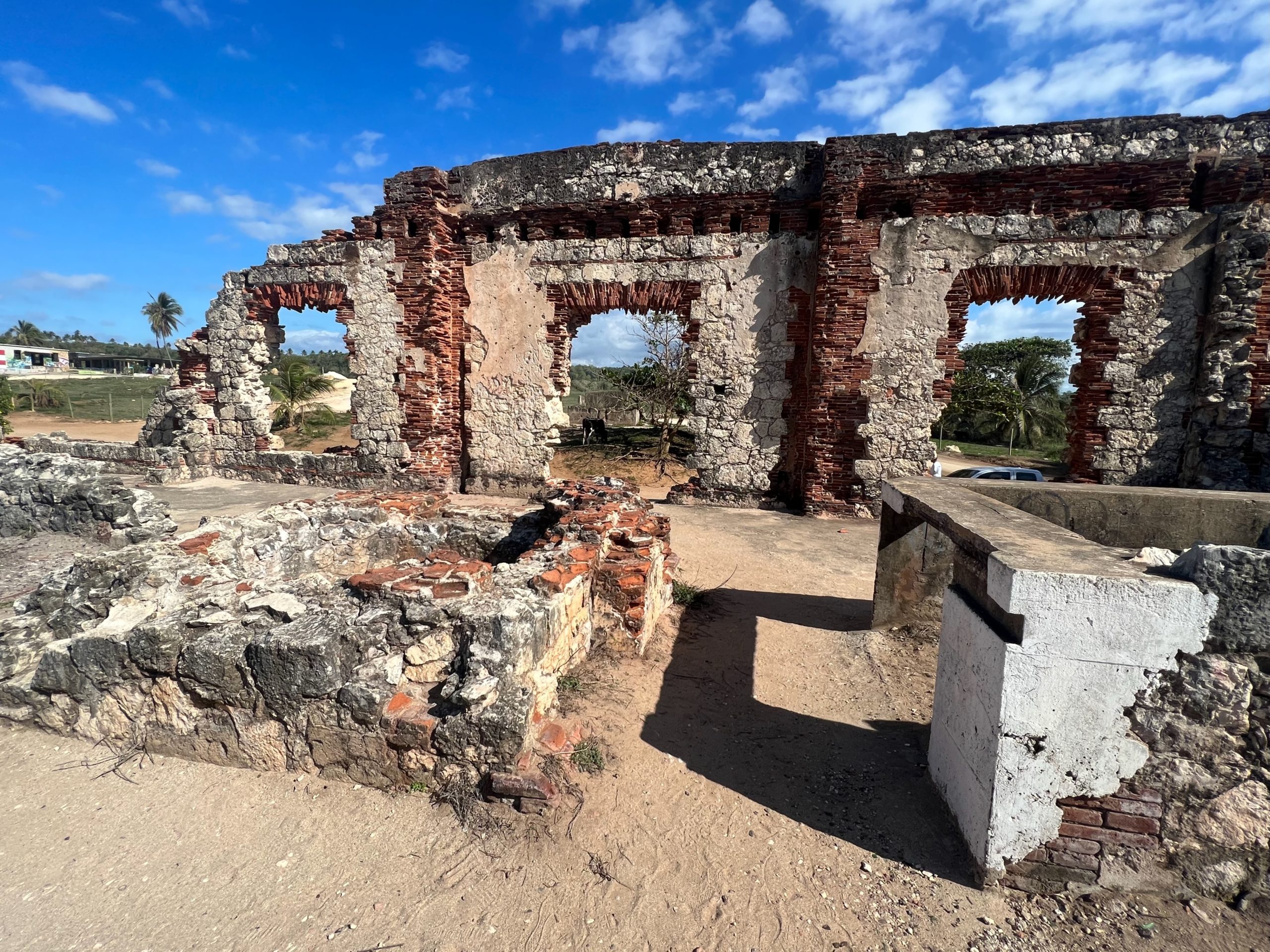
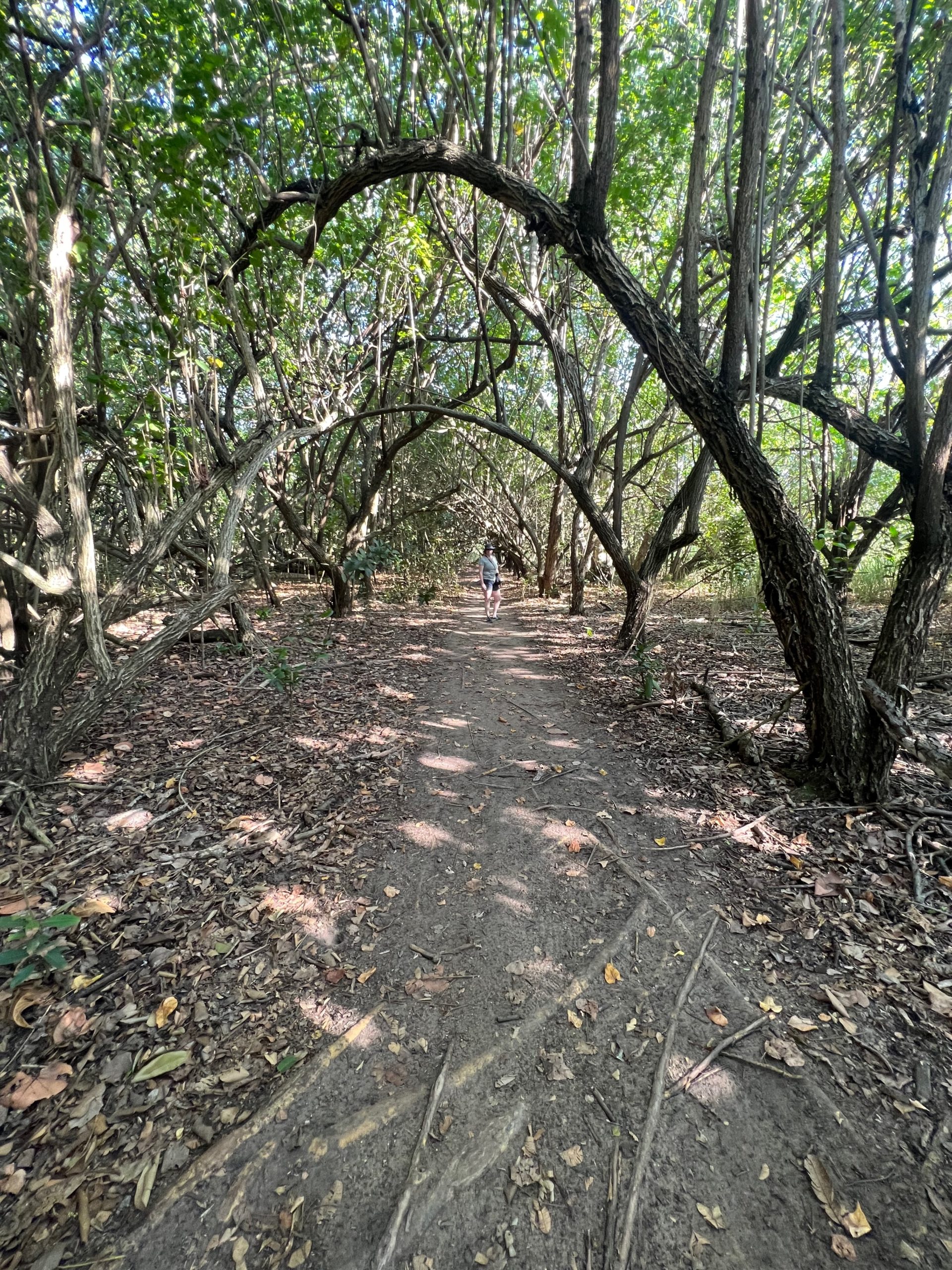
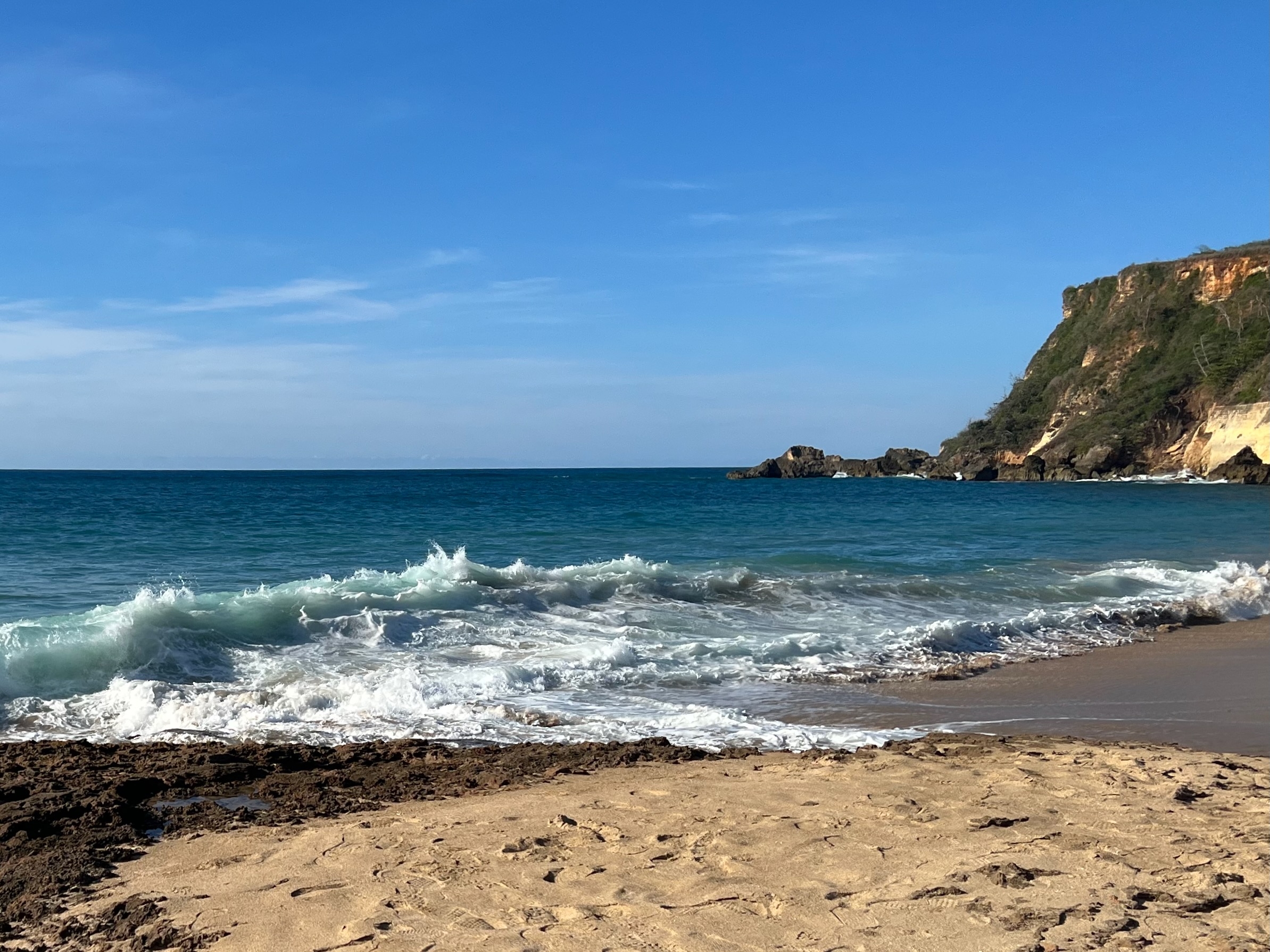
From Aguadilla Pueblo, we drove to the Ruinas del Faro. The ruins are a lighthouse that failed to survive a 7.5 magnitude 1918 earthquake. It is a surf beach and an outdoor park for motorbikes and mountain bikes, but it is not much of a hiking place. We followed dusty roads and mountain bike-filled trails, trying not to get run over. We passed by the other airport, the narrow streets of Isabella, and yet another medical van hoisted up on a post like a billboard.
Back for dinner, our gracious host took the night off as our personal chef. We dined down the street at the Rancho Del Norte Hatillo, a restaurant oddly situated by itself within the El Gran Parque del Norte. This time I really did have the shrimp mofongo. No one took advantage of the romantic walk in the moonlight.
(Friday night)
A slight breeze blows through the palms. We sit out late after the ballgame, so there are no walkers or joggers. I’m drinking the rum straight. All that fruitiness is giving me indigestion and too many calories. A police car makes its nightly rounds by the park with its flashing blue lights. With the trip coming to a close, there isn’t much talk, but I will recap the events of the day, nevertheless.
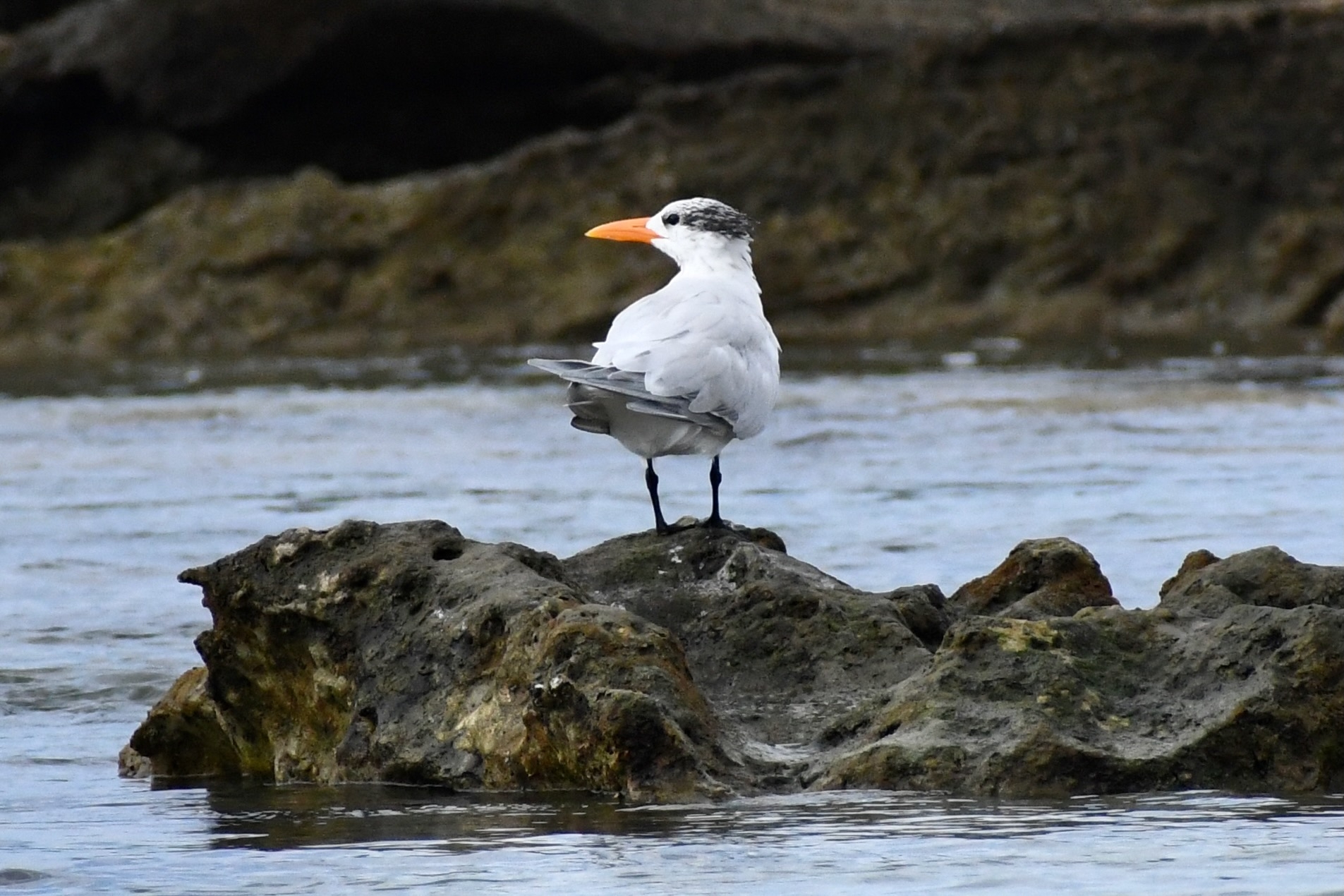
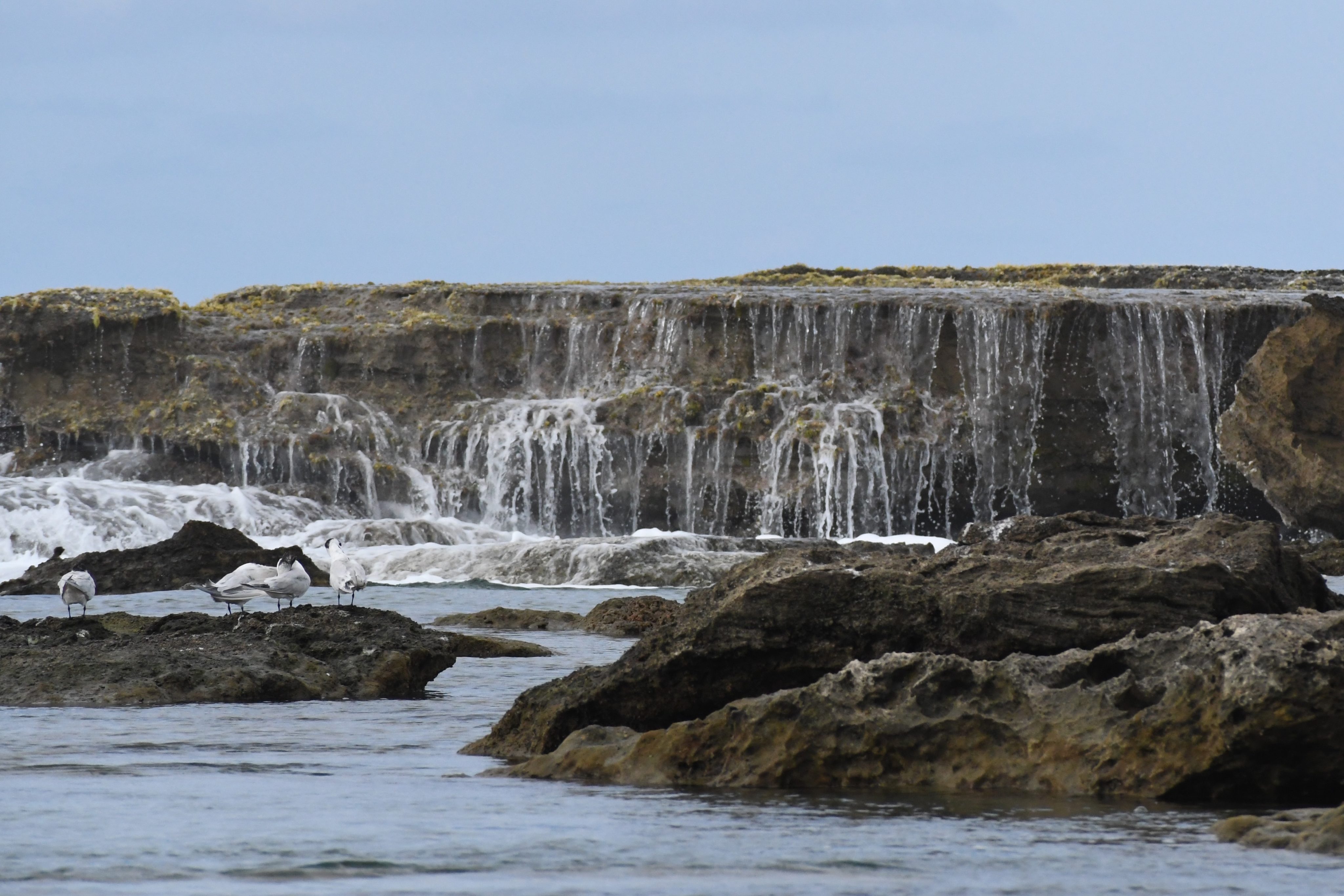
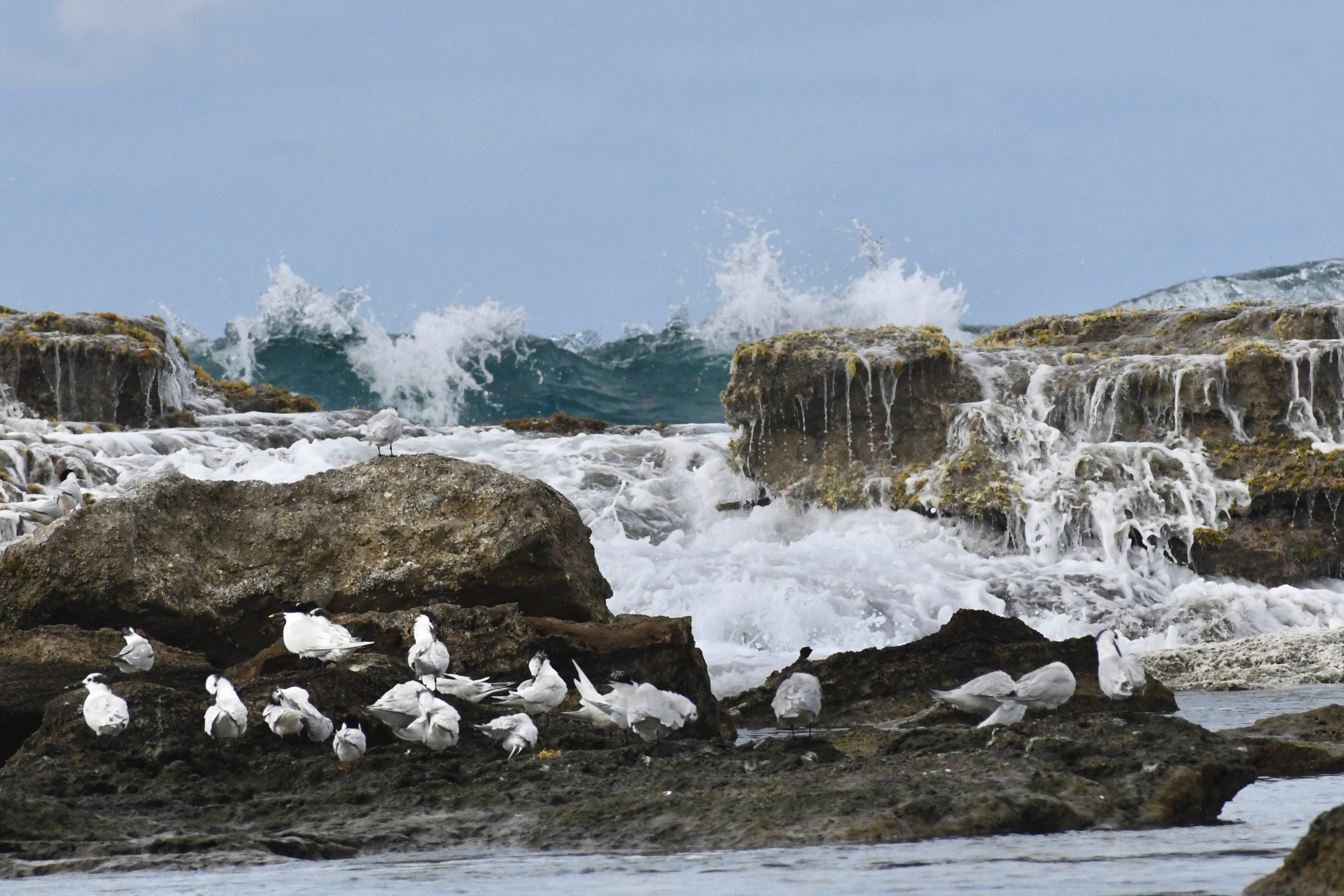
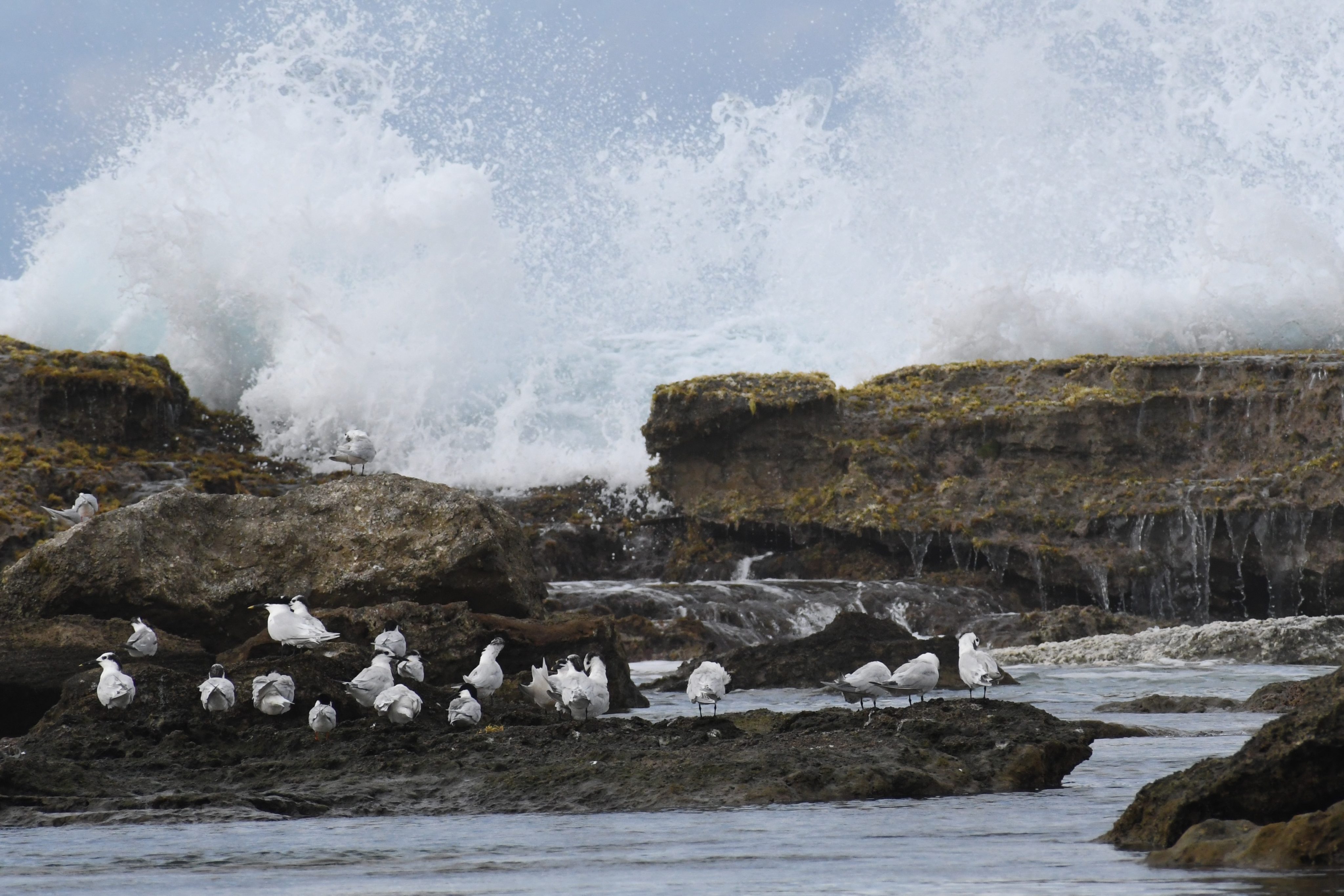
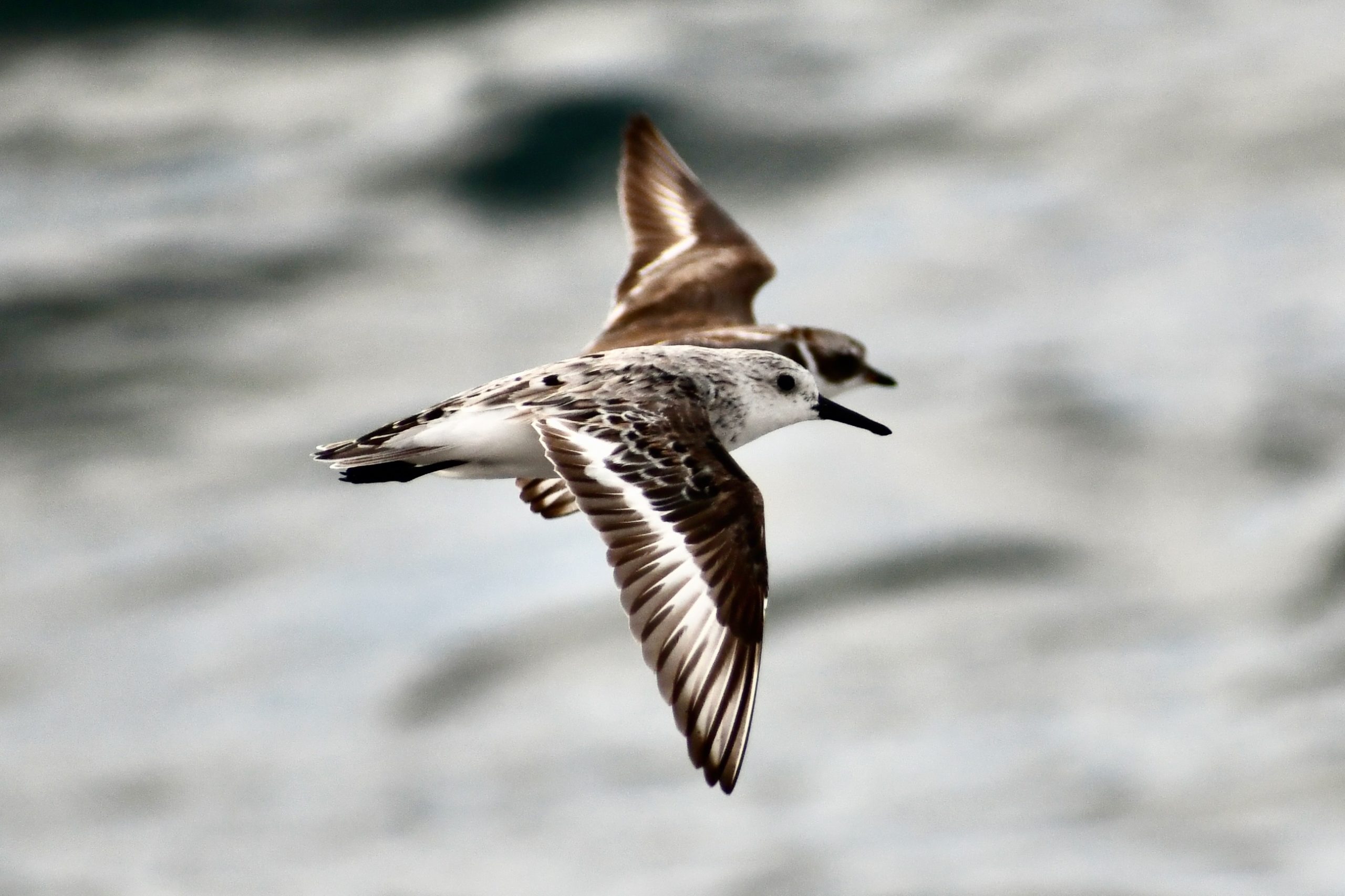
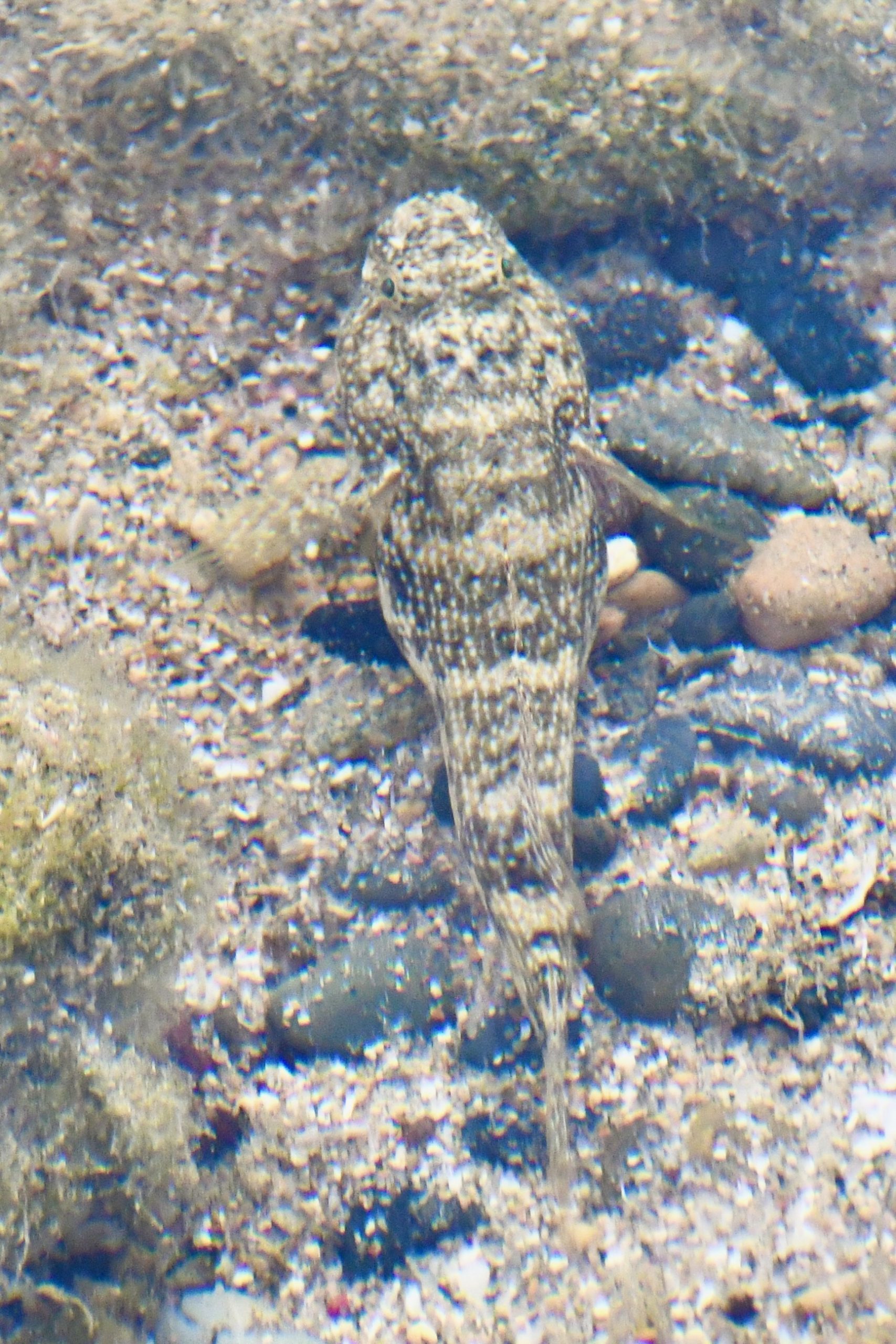
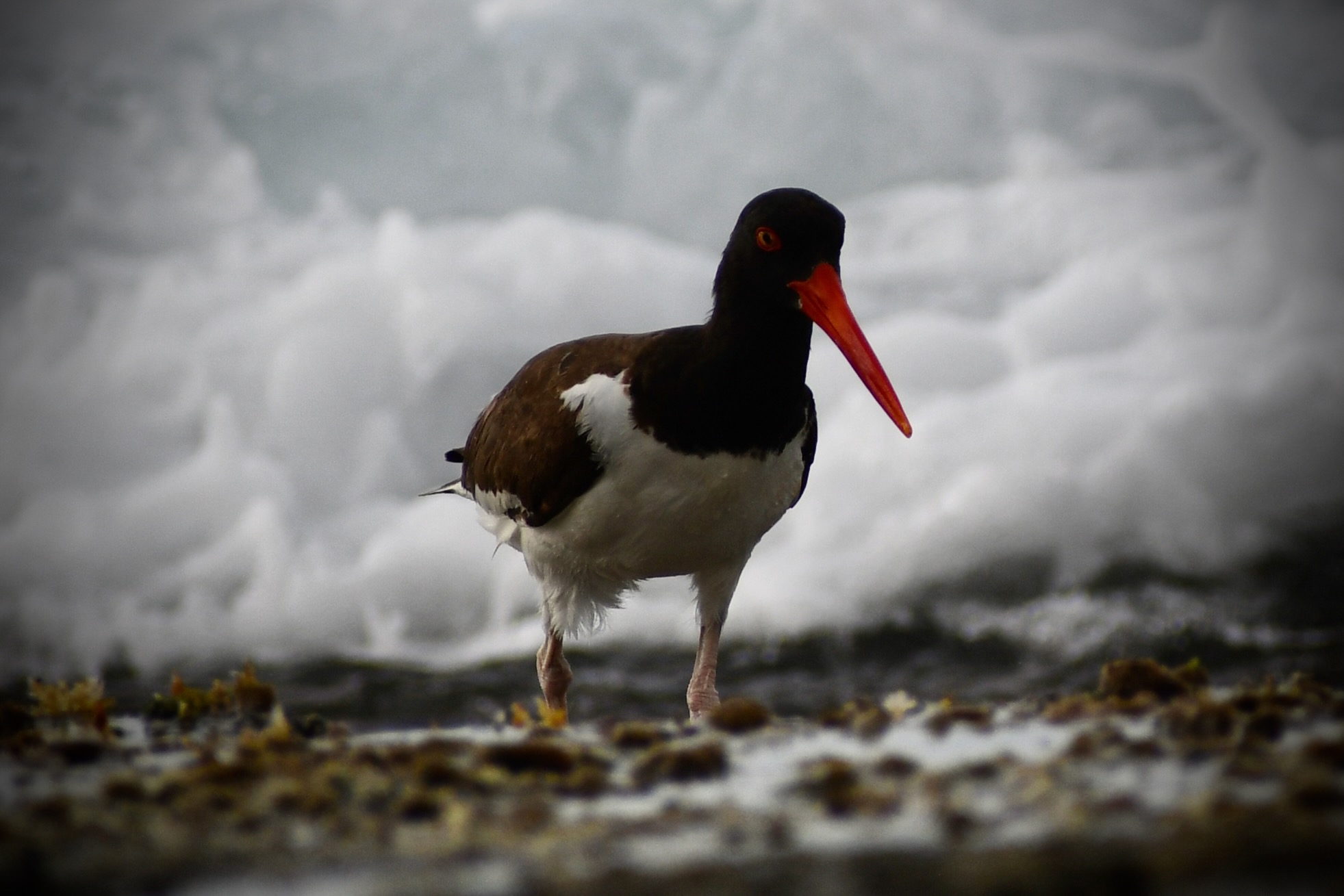
We settled on Sardineras Beach, just a mile or so to the east of Hatillo. As intriguing as Crash Boat Beach sounds, we had already taken the long drive to the west coast the day before. Sardineras Beach is uncrowded, with a protected pool perfect for snorkeling. A flock of royal terns perched inside protective outer rocks as waves exploded in the background. Plenty of marine life lives in the rock reef, including barracuda, well-camouflaged-in-the-sand flounders, and a den of lionfish. I was excited to find the spiny and poisonous lionfish but learned they are invasive and problematic with voracious appetites. The only behavior I observed was them hiding out in a protective hole in the rock.
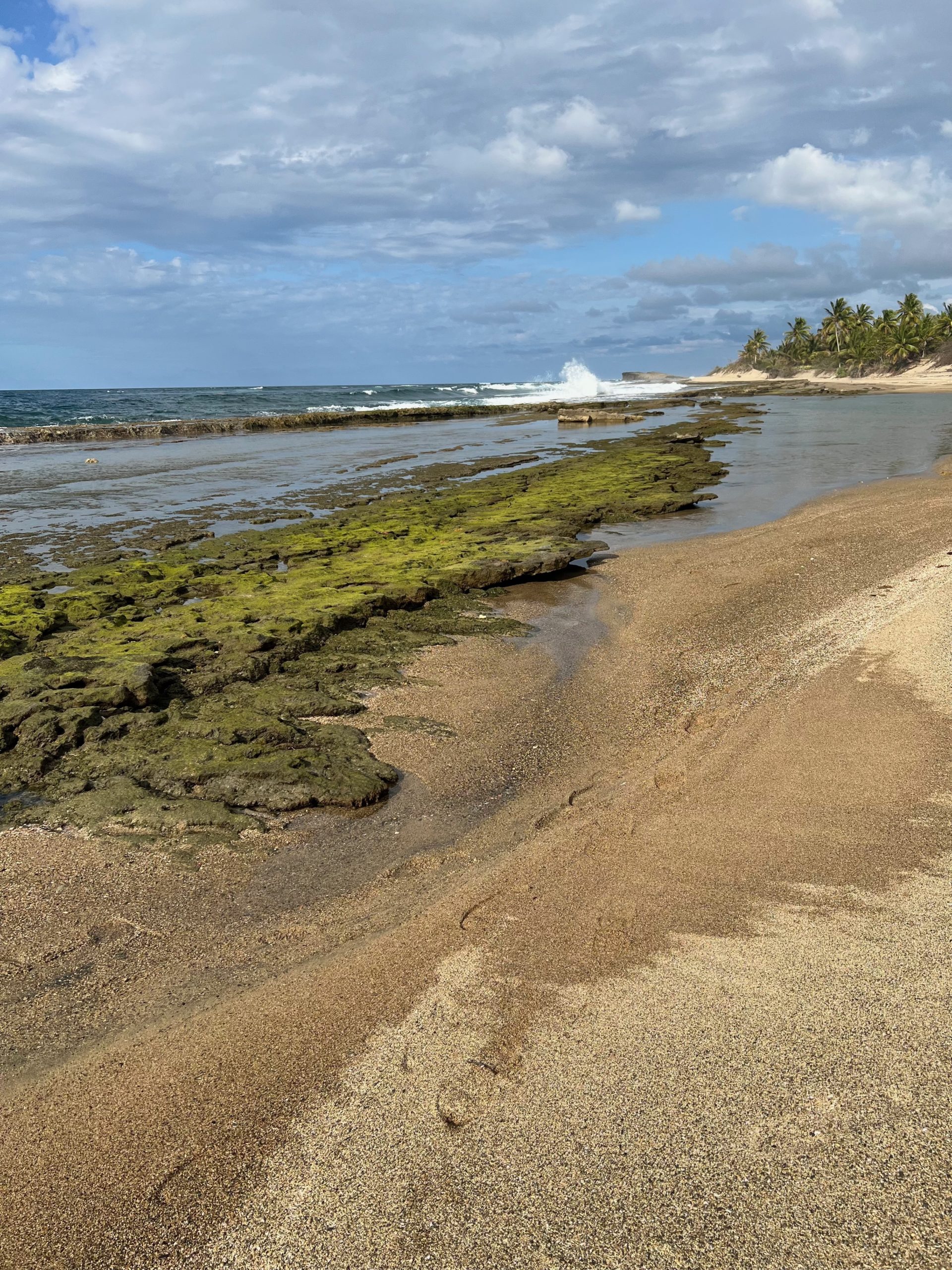
After our snorkeling excursion and retrieving my camera, we hiked the mile from Sardineras Beach to our Hatillas del Mar home. The entire shore is rocky and unswimmable but beautiful in its own way. We have the whole coastline to ourselves, almost like a scene out of Castaway: no people to erase from the pictures on our phones. I capture my trophies on the camera while others find them in the remains of washed-up ocean life.
Back at the house, I talked baseball with Freddy. Sadly, he is a Yankee fan. The Yankees stuck the Cubs with Alfonso Soriano, but the Cubs have their revenge in unloading Jason Hayword. After the fact, I remembered the Cubs traded Jason Heyworth to the Dodgers, not the Yankees. I’m a poser as a baseball man, mostly just following the Cubs, not interested in the behind-the-scenes. The best Puerto Rican baseball player of all time and one of the best players of all time is Roberto Clemente. I remember him playing, and I read his biography long ago. He died in a rickety cargo plane that crashed just off the shores of Puerto Rico on a humanitarian mission to deliver aid to Nicaragua earthquake victims. The best current Puerto Rican player is up for debate. Yadier Molina just retired, and there are a couple of up-and-coming stars.
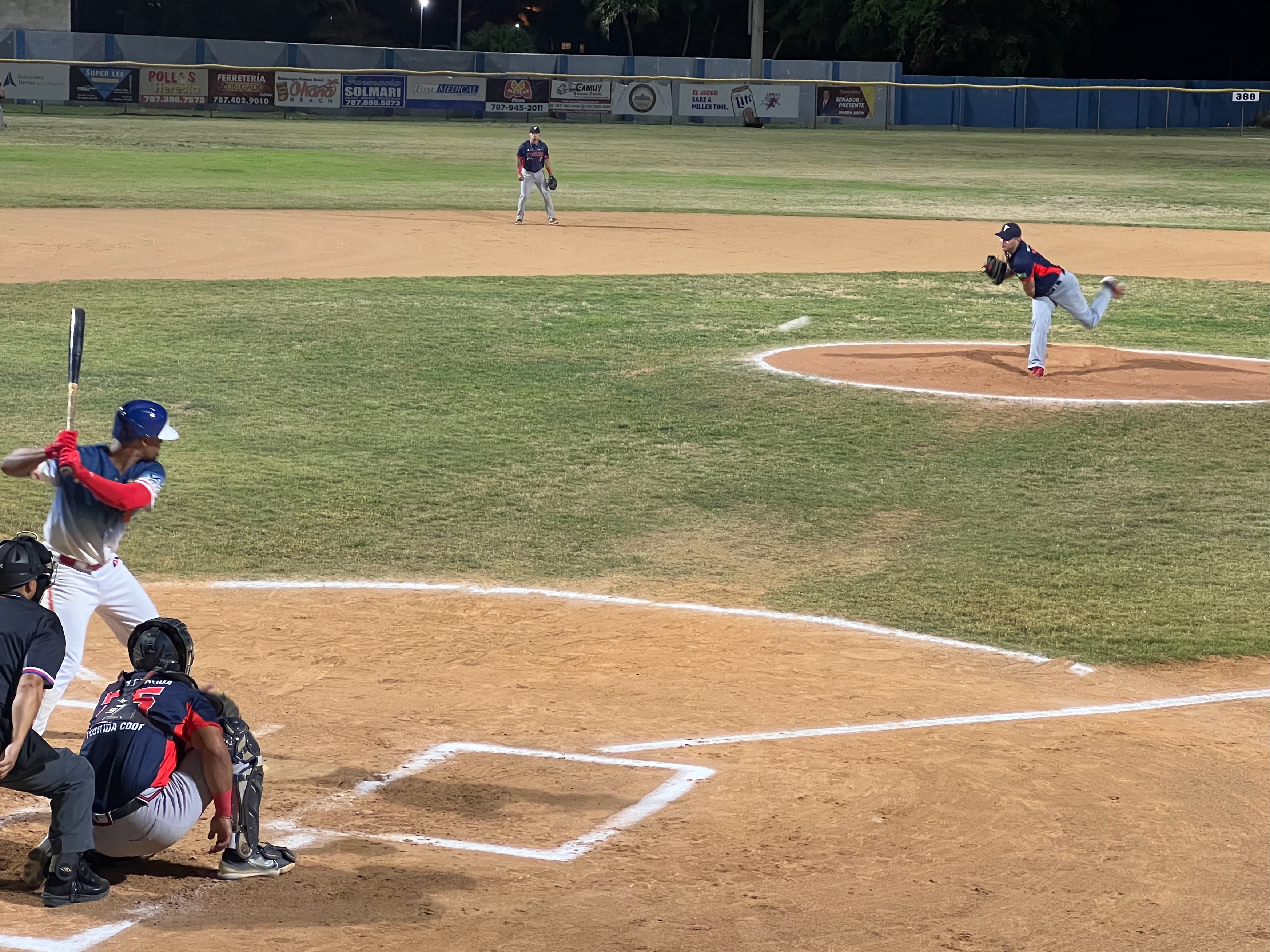
The Doble A minor league game we watched was a blowout. A few guys on the home team looked decent, one good enough to go to the pros. But on the whole, there were a lot of little-league errors, making the game hard to watch. The price was right at six dollars a ticket and seven dollars for a double shot of rum drink. By our estimates, the attendance may have been about a hundred. At least three were bored, expressionless girlfriends working their phones for most of the game, but they were offset by the enthusiasm of a whistle-blowing guy and two trumpet-noise-making-instrument-operating girls. All foul balls were retrieved, and we speculated on the ball polishing skills of the genderless ball person. We left after six innings with the home team up 12-0.
(Saturday night)
A car, an airplane, an airplane, and a car ride later, we are back in Southern California, back in real-time and not island time. The trip is over. It is cold again, down in the fifties, and we are not hanging out on a porch listening to waves crashing but hiding inside, oblivious to the faraway drones of the nearby freeway.
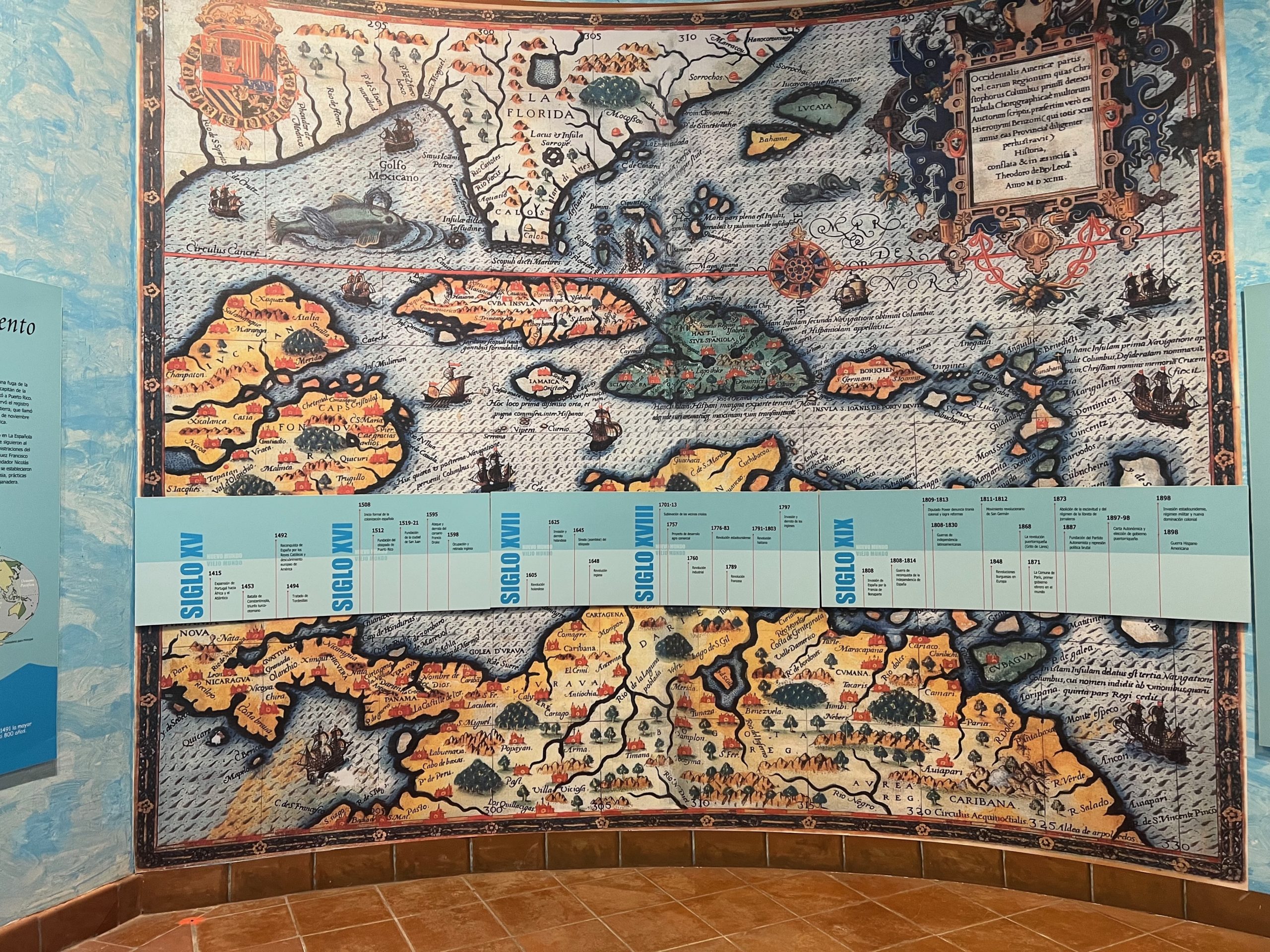
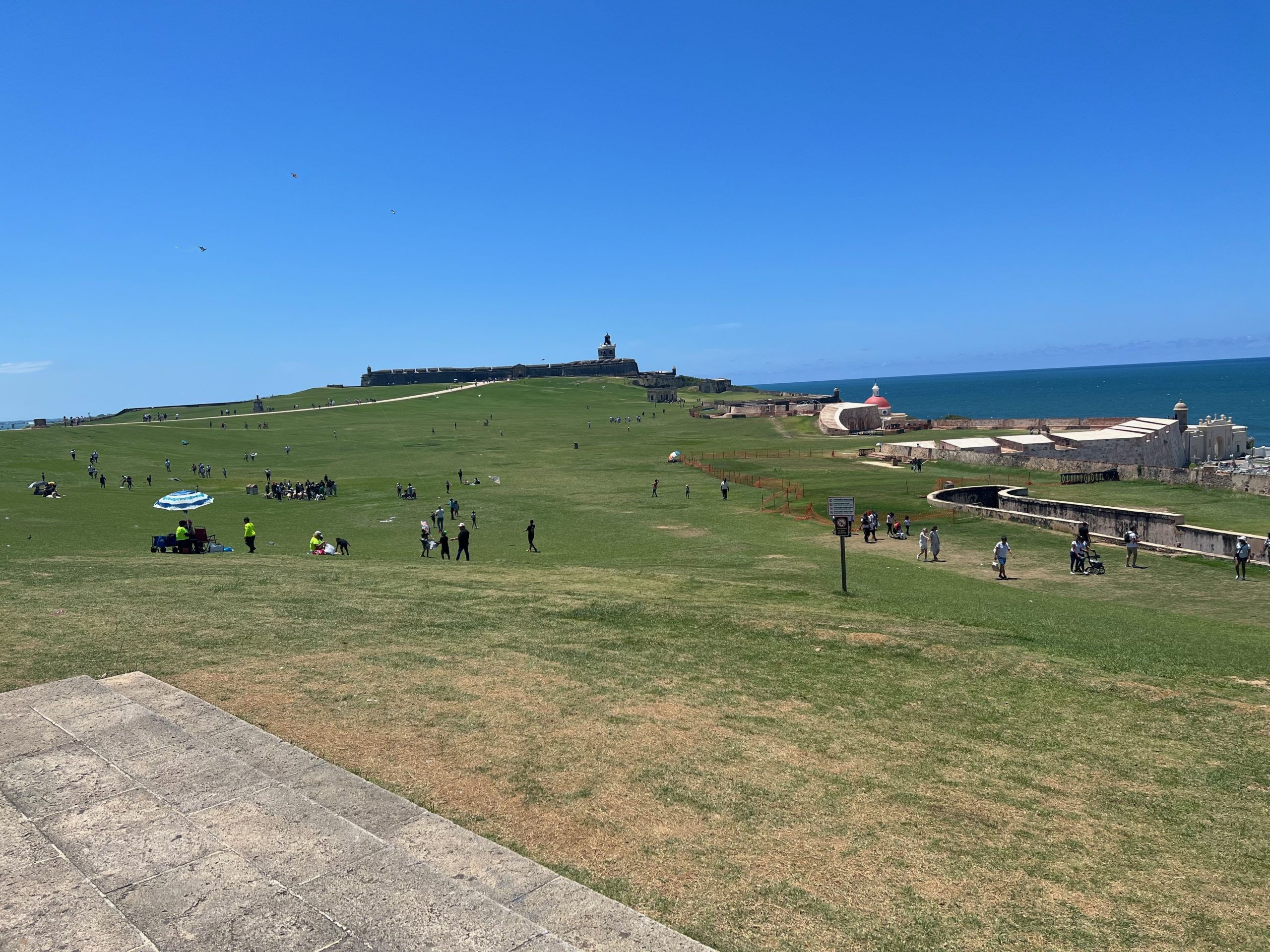
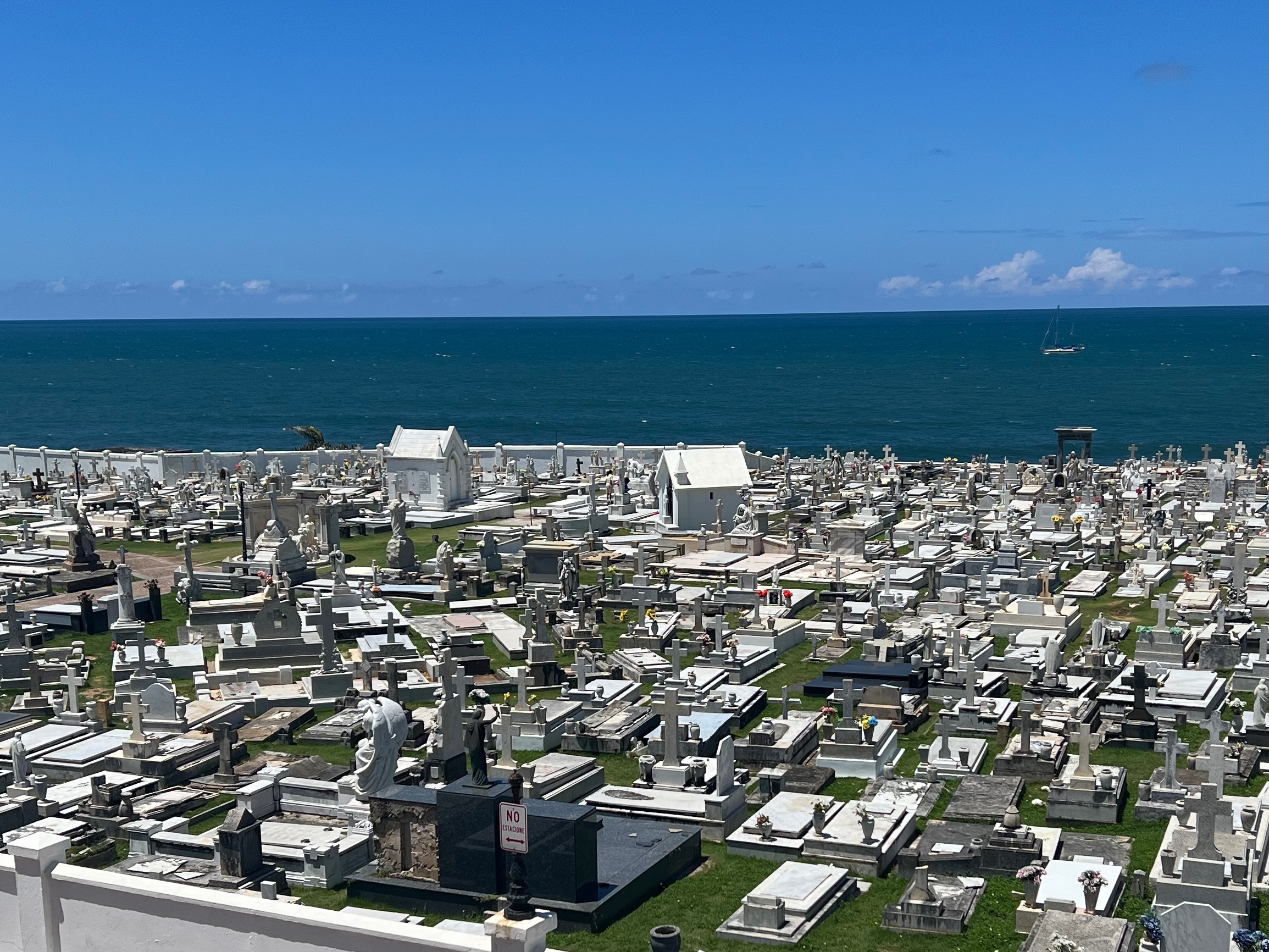
Before our flight, we had time for one more brief foray into Old San Juan to visit the Museo De Las Americas. I wanted to see Tainos artifacts up close since I had written so much about them in “The Death of Baracutey.” There really wasn’t much to see from pre-Columbian times, though I don’t think we made it to all the exhibit rooms in the short time we had. The visit to the museum was depressing as it documented many of the horrors of slavery, including a mockup of a slave ship with a documentary of slaves in shackles receiving morsels of food.
Regarding my description of a San Juan museum in the book, I would replace columns with a pastel color. But I’m thinking ahead to the next book. An anthropological museum should capture the authentic identity of a culture through its history. Identity and authenticity are two themes I’d like to pursue if I do a follow-on to the “Property of Nature.” A search for identity is the common motivation of a pilgrimage and a search for roots: a space race who return to their origins on Earth and of a native species in pursuit of its evolutionary roots. Authenticity is an issue when two culturally different groups interact, like when a city tries to serve the twin purposes of tourism and historic preservation.
We are off island time after two flights and a late-night car ride. For me, it’s back to work and writing. I’m a goal-driven person that doesn’t idle and fit the island mentality well. I won’t complain about sleeping late and drinking early, but I always feel I should have done more with the day when I live on island time.
If it is up to me, there will be another trip. Now that I have the lay of the land, I have an agenda to see more of the island and the nearby islands and do at least a few things I couldn’t with an injury. If I ever spend a long time there, I have to figure out how to keep up with the writing and push my ass out the door before the day is half gone. Island time, and I will have to meet halfway. But for now, it’s back to treadmill and rat race time.
*Island Time. in italics
** To be fair, this information is based on other blog reports, not direct knowledge of the codes or official sources
